
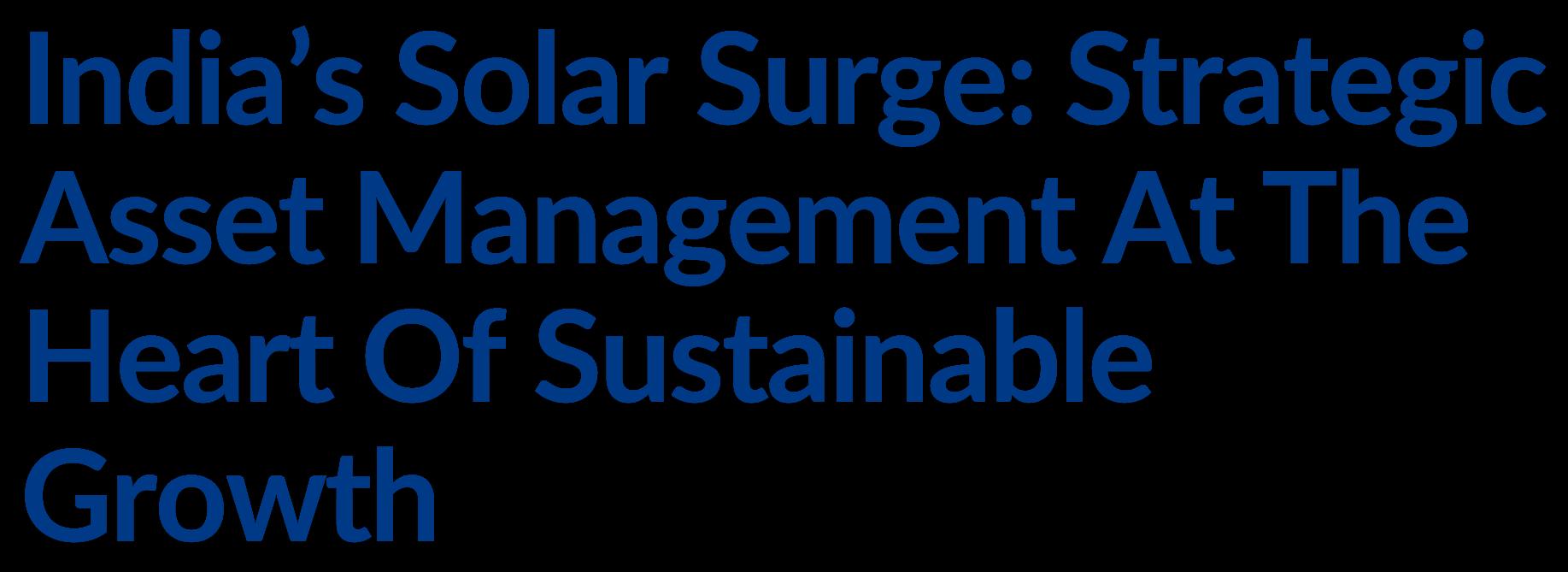





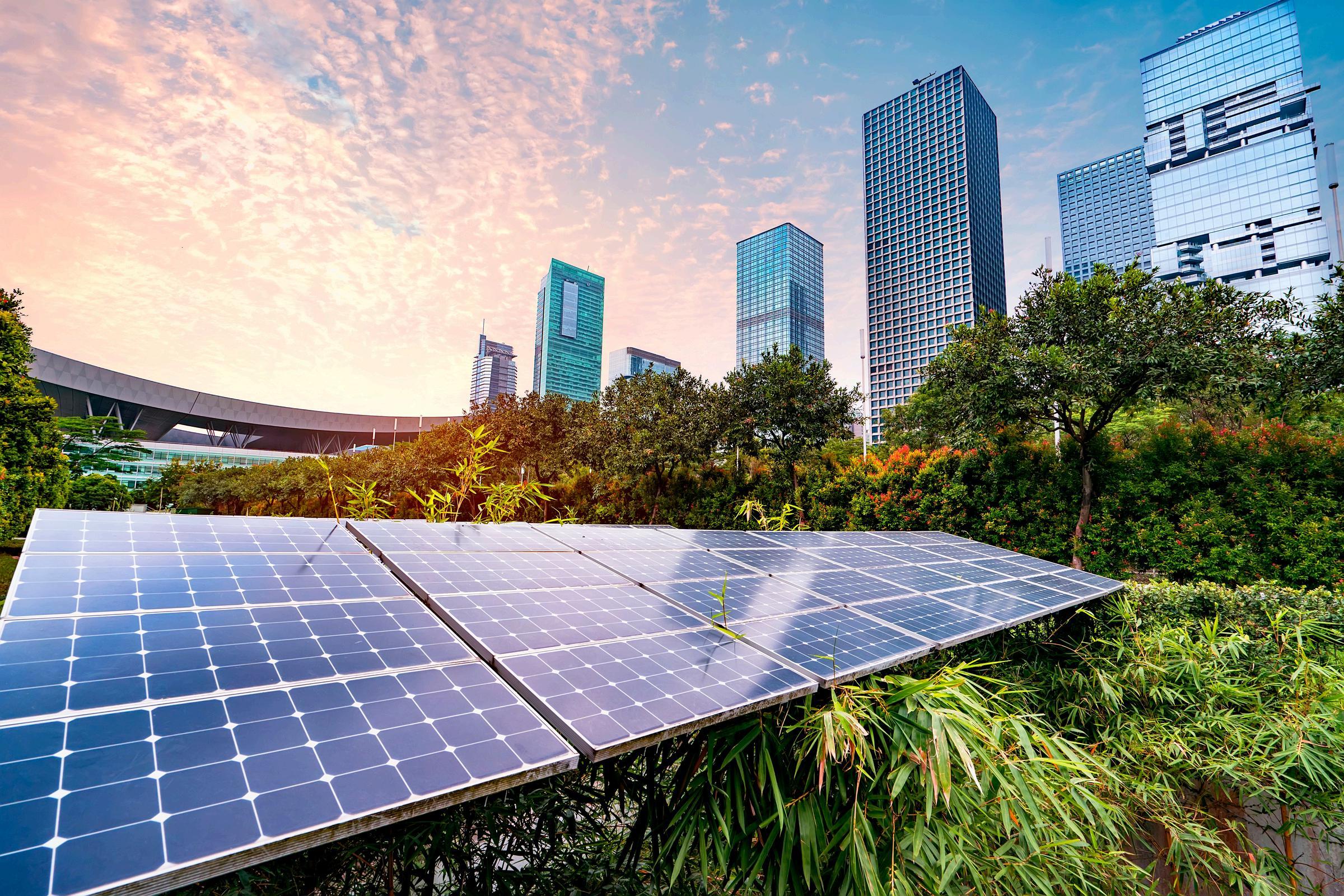














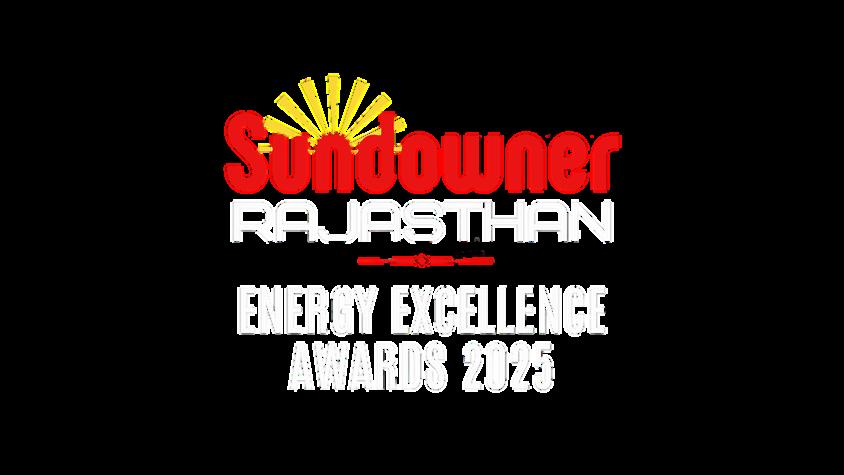

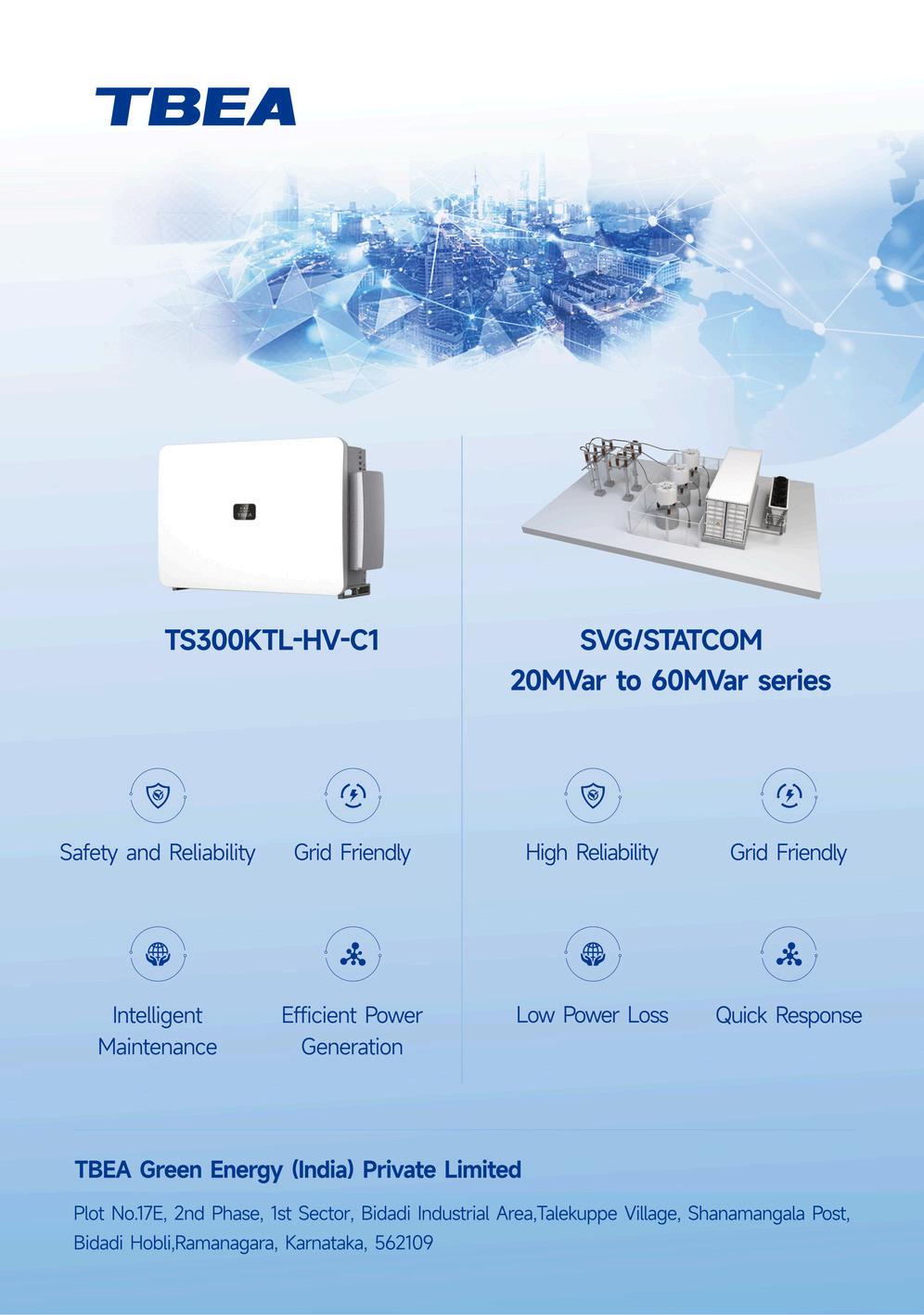
Investment >


























Investment >

Serentica Renewables Secures Major Financial Support Of $100M+ ECB Loan from Rabobank And Société Générale To Power Bharat Aluminium Company Limited Power (BALCO)
Serentica Renewables closed a $100million+ External Commercial Borrowing (ECB) loan with Rabobank and Société Générale to develop a 300MW solar project in Rajasthan powering BALCO. This industrial-scale clean energy initiative supports BALCO’s decarbonization goals and highlights global investor confidence in Serentica’s execution and vision for India’s energy transition
TeamLease Regtech Highlights 2,735 Compliance Tasks For A Single Solar Plant In India
TeamLease Regtech’s report reveals that one solar plant in India faces 799 regulatory obligations 646 central and 153 state/municipal resulting in 2,735 annual compliance tasks. Labour laws alone span 244 obligations (1,071 tasks/year) The study emphasizes digital tools, centralized tracking, and stronger industry regulator collaboration to manage compliance as renewable energy scales
Asian Development Bank President Visits ReNew Power to Reinforce $5.3 Billion Partnership Advancing India’s Clean Energy Transition
ADB President Masato Kanda visited ReNew Power to reaffirm a $5 3 billion partnership supporting India’s clean energy transition The collaboration spans solar, wind, and hybrid renewable energy projects, along with battery storage This visit marks ADB's commitment to expanding private sector engagement in climatepositive infrastructure in India while accelerating the country’s decarbonization goals
SAEL Secures $132 Million Investment from NDB, AIIB & Societe Generale for Andhra Pradesh Solar Project
SAEL secured a $132 million investment from the New Development Bank (NDB), Asian Infrastructure Investment Bank (AIIB), and Société Générale for its 400 MW solar project in Andhra Pradesh This strategic funding reinforces SAEL’s commitment to expanding India’s renewable energy capacity and aligns with global sustainable finance goals
Roofsol Energy Secures ₹2.1 Billion Funding from Aseem Infrastructure Finance to Expand Solar Portfolio
Roofsol Energy has secured ₹2 1 billion in funding from Aseem Infrastructure Finance to scale its rooftop and utility-scale solar projects across India This financial boost will help the company reach 500 MW of solar installations and further the adoption of clean energy, contributing to India’s renewable energy targets


Solfin Disburses INR 100 Crore in Solar Loans Backed by Waaree Investment, Sets Sights on Green Finance Expansion
Solfin has disbursed INR 100 crore in solar loans, with significant backing from Waaree. These funds support residential and C&I solar customers. With plans to expand across 100 cities and increase partnerships, Solfin aims to accelerate solar adoption and green financing, targeting 5,000 rooftop installations in the next year
Waaree Renewable Technologies Limited Receives ₹114.22 Crore Letter of Award (LOA) Under Mukhyamantri Saur Krishi Vahini Yojana (MSKVY) 2.0
Waaree Renewable Technologies Limited has received a ₹114 22 crore LOA from a leading renewable energy company under the Mukhyamantri Saur Krishi Vahini Yojana (MSKVY) 2 0 This project is expected to promote farmer-centric solar energy generation and reduce agricultural electricity costs in Maharashtra by deploying decentralized solar projects
BluPine Energy Hits Major Milestone With ₹376 Crore Funding For 100 MW Solar Project In Gujarat
BluPine Energy achieved a key financial milestone with ₹376 crore funding for its 100 MW solar project in Gujarat This investment accelerates project development and highlights investor confidence in India’s clean energy sector The project will contribute to Gujarat’s renewable targets and reduce carbon emissions significantly
ReNew Receives $100 Million Investment From BII To Enhance Solar Manufacturing In India
ReNew Energy Global Plc (ReNew), a leading company in decarbonization solutions has secured a $100 million (INR 8700 million) investment from British International Investment (BII), the UK’s development finance institution and impact investor This funding will support the growth of ReNew’s solar manufacturing business in India through its subsidiary, ReNew Photovoltaics Private Limited
On May 1, 2025, DERC amended its net metering guidelines to support rooftop solar adoption under PM Surya Ghar: Muft Bijli Yojana Domestic consumers installing systems up to 10 kW are now exempted from application and registration fees. The move eases financial barriers, promotes clean energy in Delhi, and aligns with national renewable energy goals. The amendment is effective immediately, aiming to boost household-level solar installations across the city
MNRE Clarifies ALMM Exemptions For NetMetering, Virtual Net Metering, And Captive Government Solar Projects
The MNRE clarified that ALMM exemptions for solar cells apply equally to Net-Billing, Virtual Net Metering, and Group Net Metering projects commissioned before June1,2026, treating them on par with Net-Metering schemes However, behind-the-meter captive solar projects set up by government or public sector entities remain subject to ALMM requirements, per the office memorandum, and are not exempt
MNRE rolled out a standardized application format for solar PV cell manufacturers seeking inclusion under ALMM List-II The form mandates detailed entries company details, plant location (with GPS), authorized signatory proof, cell type (mono, multi, technologies like PERC, HJT), and STC parameters (Pmax, Voc, Isc, etc ), including PID resistance Each PV cell type requires a separate application to ensure transparency, traceability, and quality control
JSERC Amends Rooftop Solar Regulations To Ease Adoption Under PM Surya Ghar Scheme In Jharkhand
JSERC issued the Sixth Amendment to its 2015 Rooftop Solar Regulations, easing processes for applicants under the PM Surya Ghar Yojana Published on May 14, 2025, the amendment waives application fees and interconnection agreement requirements for these applicants. It mandates safety features, including isolation and auto-disconnection systems, and adherence to BIS/IEC/IEEE standards The changes aim to simplify rooftop solar adoption in Jharkhand, promoting clean energy and enhancing consumer convenience
ALTÉRRA Commits $100 Million to Evren in Inaugural Co-Investment, Boosting India’s Renewable Energy Goals
ALTÉRRA the world’s largest private climate investment vehicle has announced its first co-investment, injecting $100 million into Indian renewable energy firm Evren The investment, made through the ALTÉRRA Acceleration Fund, marks the platform’s first direct funding into the Global South, as part of a broader partnership with Brookfield Asset Management and other strategic investors

Gujarat Commission Approves Solar Buyback At ₹2.83/Unit For Farmers Under PM-KUSUM Scheme
Gujarat Electricity Regulatory Commission approved a petition by state DISCOMs to implement Component C of PM-KUSUM, allowing farmers to solarize agricultural pumps Surplus solar power will be purchased at ₹2 83/unit for 25 years Farmers get a 60% subsidy, with 40% self-funding The Commission upheld key guidelines, ensuring sustainability, technical viability, and transparency Local grievance redressal and contract translations in Gujarati were mandated. The final order was issued on May 23, 2025.
MERC Approves ₹2.79/kWh Tariff For 400 MW Solar Power Procurement By MSEDCL
Maharashtra Electricity Regulatory Commission (MERC) has approved the tariff for the procurement of 400 MW of solar power by the Maharashtra State Electricity Distribution Company Ltd (MSEDCL). The tariff of ₹2.79 per unit has been accepted after a competitive bidding process The power will be sourced from intrastate grid-connected solar projects and supplied by Avaada Energy Pvt. Ltd. (AEPL) for 25 years.
Approves Tariff Adoption For NHPC’s 1400 MW Renewable Energy Projects With Storage
NHPC sought CERC’s approval to adopt tariffs for 1,400 MW renewable energy projects with storage, awarded via competitive bidding Six bidders secured allocations, with tariffs ranging from ₹4 55 to ₹4 64/kWh Delays in DISCOM approvals postponed NHPC’s petition. CERC approved the tariffs and a ₹0.07/kWh trading margin, conditional on executed PPAs and PSAs for full capacity. The process was deemed compliant, and the petition was disposed of on May 30, 2025
APTEL Upholds GST Relief On O&M Costs For Solar Developers, Orders CERC To Reconsider
The Appellate Tribunal for Electricity ruled that Azure Power and others are entitled to GST-related compensation under the 'Change in Law' clause for both construction (EPC) and outsourced O&M costs It overturned CERC’s earlier denial of O&M claims, citing legal precedent and industry norms The tribunal emphasized fairness and consistency, directed CERC to reconsider the matter afresh, and noted partial stays in related Supreme Court proceedings must not hinder compliance with enforceable provisions.

CSERC Approves Open Access Without Dedicated Feeder For Captive Solar Power Use In Chhattisgarh
KPS Agro Metals LLP and KPS Aluminium & Glass Pvt. Ltd. sought exemption from the dedicated feeder requirement for 1 5 MW solar power under CSERC regulations With both injection and drawl points under the same licensee, they agreed to technical and regulatory conditions, including surrendering an existing rooftop solar facility The Commission, considering no transmission objections and petitioner compliance, approved the exemption per clause 5(5) of the Open Access Regulations, 2011.
APTEL Orders Reimbursement Of Safeguard Duty And IGST For 50 MW Solar Project Modules Under Change-In-Law Ruling In Karnataka
On May 30, 2025, APTEL partly allowed Adyah Solar’s appeals against KERC’s 2021 order on safeguard duty compensation. The tribunal ruled that Adyah was entitled to reimbursement for safeguard duty and IGST on additional modules installed before COD, citing earlier judgments It upheld KERC’s stand on tariff calculation and court fees Carrying cost was allowed, subject to the Supreme Court’s pending decision. The order affirms developers' rights under the ‘Change in Law’ clause
APTEL Favors Solar Developer In 20 MW Tariff Dispute With GESCOM In Karnataka
Tungabhadra Solar appealed KERC’s 2018 order denying time extension and imposing a penalty for project delays. The Appellate Tribunal ruled in favor of Tungabhadra, citing Supreme Court and APTEL precedents that validated timely commissioning It found KERC’s tariff reduction and penalty imposition beyond the petition's scope and overturned them The tribunal allowed Tungabhadra to seek the original tariff of ₹5 46/kWh and directed KERC to resolve the matter within four months
GERC Approves Tariff For GUVNL’s 1000 MW Solar Tender (Phase XXV), Boosting Gujarat’s Renewable Push
GUVNL sought approval from the Gujarat Electricity Regulatory Commission to adopt tariffs from its Phase XXV solar tender, which awarded 1,000 MW at ₹2 55–₹2 56/unit through competitive bidding and e-reverse auction. Seven bidders won base capacity; four accepted additional greenshoe capacity The Commission acknowledged procedural compliance and emphasized full documentation in future petitions. The discovered tariffs support Gujarat’s renewable goals and ensure cost-effective power procurement for the state’s distribution companies.
KSERC Approves Technopark’s Capital Investment Proposals For Infrastructure And Solar Projects In Kerala
Technopark, a deemed licensee in Thiruvananthapuram, sought KSERC’s approval for ₹517 95 lakh capital investment in FY 2023–24. Projects included upgrading 11 kV systems and installing rooftop solar plants, including one above an EV charging station. KSERC provisionally approved the proposals, instructing adherence to MNRE benchmark rates, competitive bidding, and proper documentation Funding must come from grants and regulatory surpluses All approved assets must be geo-tagged, with replaced assets removed from records
Telangana Approves 200 MW Solar Power Procurement From NLCIL Under CPSU Scheme To Meet Rising Demand And Green Targets
Telangana Electricity Regulatory Commission approved TGDISCOM's plan to procure 200 MW of solar power from NLCIL under CPSU Scheme Phase-II. Priced at ₹2.57/kWh, the power will help meet Telangana’s growing demand and Renewable Purchase Obligations Despite project location concerns and tariff revisions, the Commission deemed it cost-effective. Stakeholder issues were addressed, including ISTS charges The Commission emphasized future approval requirements and recognized the importance of reliable, renewable energy for Telangana’s long-term needs
Telangana Regulator Approves 200 MW Solar Power Deal With NLCIL Under CPSU Scheme
The Telangana Electricity Regulatory Commission approved TGSPDCL and TGNPDCL's proposal to procure 200 MW solar power from NLC India Ltd under the CPSU Scheme Despite tariff revisions and stakeholder concerns over interstate charges and project location in Gujarat, the Commission found the proposal justified, supporting future energy needs and RPPO targets It emphasized domestic component use, higher CUF, and mandated prior approvals for similar deals in the future, ensuring compliance with national renewable energy goals
Delhi Approves ₹1.08 Lakh Subsidy For 3 kW Solar Rooftop System
The Delhi government has approved a major solar subsidy scheme, offering up to ₹1 08 lakh for a 3-kW rooftop system ₹78,000 from the central government and ₹30,000 from the state. Smaller systems and EMI-based financing are also supported Additionally, pollution control measures include deploying sprinklers, sweepers, and smog guns ahead of winter. Officials call it a historic step toward clean energy adoption and improved air quality in the national capital.
PM-Surya Ghar: Muft Bijli Yojana Transforms Varanasi With Affordable Solar Rooftop Power
The PM-Surya Ghar: Muft Bijli Yojana is transforming Varanasi by promoting solar rooftop adoption With subsidies covering up to 73% of costs, households save around ₹2,972 monthly, recovering their investment in under four years Over 4,500 jobs were created, and 77% of users reported improved living standards The initiative boosts environmental awareness, reduces carbon emissions, and promotes responsible energy use. While some maintenance challenges exist, 90% of users recommend the program. It empowers communities toward clean energy, financial savings, and sustainability, supporting India’s climate goals and renewable energy transition
Building Climate Resilience: Why Quality Infrastructure Is Vital For Renewable Energy In An Era Of Extreme Weather – Report
Climate change and extreme weather are increasingly threatening solar and wind energy systems. IRENA reports a sharp rise in climate-related disasters, stressing the need for climate-resilient renewable infrastructure Quality Infrastructure (QI) standards, testing, and monitoring helps installations withstand harsh conditions, minimizing damage and downtime Risk assessments, strong construction, and predictive maintenance improve performance and reduce financial losses Though initial costs may rise, long-term gains include higher returns and energy security Policymakers, investors, and manufacturers must support QI to ensure a reliable, climate-resilient renewable energy transition and safeguard future energy investments.
Driving Sustainable Development Through Energy: India’s Progress And Global Outlook –Energy Statistics 2025
Sustainability, central to the UN’s 2030 Agenda, relies on renewable energy, efficiency, and energy access SDG 7 promotes universal energy access, renewable adoption, and improved efficiency India has achieved 100% village electrification and is shifting towards cleaner energy, with renewables (excluding hydro) rising from 6% to 12% Energy indicators track progress across sectors, including energy intensity, fuel mix, and CO₂ emissions. Though emissions increased, the share from energy industries fell. These metrics guide policy, ensure energy security and support global cooperation for clean energy transitions, especially in developing nations like India

Global Giants Power Asia’s Renewable Energy Leap, Finds RE100 Report

Asia is becoming central to the global energy transition, with RE100 reporting strong corporate progress in countries like India, Vietnam, and China Nine of 2024’s ten largest RE100 signatories are Asian, highlighting rising climate ambition. However, challenges persist high costs, limited supply, and procurement barriers, especially in South Korea. RE100 is tackling these through local policy efforts, improving programs in South Korea, and aligning China’s GECs with global standards As Asia becomes a renewable growth frontier, swift policy action is vital to attract investment, boost accessibility, and drive a sustainable global energy future
India’s Renewable Energy Potential Reaches 2.1 Million MW, Led By Wind And Solar Power – Energy Statistics 2025
As of March 31, 2024, India’s renewable energy potential reached 2,109,655 MW, led by wind (1,163,856 MW) and solar (748,990 MW) Large hydro, small hydro, biomass, and bagasse-based cogeneration contribute smaller shares Rajasthan, Maharashtra, Gujarat, and Karnataka together hold over 52% of the country’s renewable potential. Wind and solar dominate due to favorable conditions across many states With effective policies and planning, India is poised to reduce emissions, enhance energy security, and drive economic growth by leveraging its vast and diverse clean energy resources for a sustainable future
CEEW-GFC Report: India’s Renewable Energy Sector Attracts Record FDI as Clean Energy Transition Accelerates
India's renewable energy sector saw a surge in FDI, rising from 1% in FY21 to nearly 8% in FY25, with USD 3 4 billion inflows in the first three quarters Of the 33 GW of power added in FY25, 89% came from renewables Energy storage innovations, green bond issuances, and record-low storage tariffs boosted sector momentum EV sales hit 1 9 million, nearing the PM E-DRIVE target Peak power demand touched 250 GW, while renewables now supply 21% of daily electricity generation
Analyzing High-Voltage Substation Failures: Insights And Recommendations From The CEA’s Standing Committee – Report
A report by the CEA’s Standing Committee of Experts highlights failures in high-voltage substation equipment (220 kV and above) across India from July 2023 to December 2024 Based on utility data, it investigates root causes and provides detailed analysis, including equipment type, manufacturer, operational history, environmental conditions, and test reports. The committee reviewed this during a March 2025 meeting and identified common failure trends due to design, manufacturing, or maintenance issues These findings aim to improve reliability in India’s power transmission system and support national energy security.
Cochin Port Invites Bids For 1.5 MW Floating Solar Project Under RESCO Model
MPUVNL Issues Revised RFP For 1200 MW Solar Projects Under KUSUM-C Scheme In Madhya Pradesh
Balmer Lawrie Floats Tender for 200 kWp Rooftop Solar Project in Chennai, Tamil Nadu
IREL Invites Bids For 150 kWp Rooftop Solar Project In Tamil Nadu
PFC Consulting Invites Bids To Evacuate 7 GW Solar Power From Dharashiv And Beed In Maharashtra
NTPC Green Energy Invites Bids For 600 MW Solar PV Modules For Gujarat INGEL Project
NHPC Invites Bids For Rooftop Solar Projects Under PM Surya Ghar Scheme Across Central Ministries
NTPC Invites Bids For 250 MW Solar EPC Project In Bikaner, Rajasthan
NTPC Invites Bids For 3450 kW Rooftop Solar Projects In Andaman & Nicobar
REIL Floats Tender For 30 MW Rooftop Solar Projects Across Rajasthan Government Buildings
REIL Invites Bids For 1350 kWp Rooftop Solar Projects Across Uttar Pradesh Government Buildings
GUVNL Invites Bids For 500 MW Solar Projects With Additional 500 MW Greenshoe Option Under Phase XXVII
NTPC Green Energy And Opera Energy Win 95 MW/380 MWh Battery Storage Projects To Boost Kerala’s Grid Stability
NVVN Floats Tender For 3450 kW Rooftop Solar Projects In Andaman & Nicobar
Bridge & Roof Invites Bids For 100 MW Solar Project At Khavda In Gujarat
PVUNL Invites Bids For 700 kWp Rooftop Solar Project At Patratu Township In Jharkhand
Coal India Invites Bids For 4 5 GW Renewable Energy Supply On Long-Term Fixed Tariff Basis
Power Grid Announces Tender For 5 MW/20 MWh Battery Energy Storage System At Nagda Solar Plant, Madhya Pradesh
NTPC Green Energy Invites EOI For Acquisition Of 50 MW+ Solar Assets With Intermediary PPAs
NTPC Issues Bid For 450 kWp Roof-Top Solar Project At TLCMP
Defence Ministry Invites Bids For 700 kWp Solar Project At Shahjahanpur Under RESCO Model In Uttar Pradesh
SECI To Launch 500 kW Solar PV Pilot Project In Pang, Leh Under RESCO Model
Damodar Valley Corporation Floats Tender For 234 MW Floating Solar Project At Maithon Dam In Jharkhand
UPMRCL Invites Bids For 5 MW Rooftop Solar Project Under RESCO Model In Uttar Pradesh
SJVN Invites Bids For 4.79 MW Rooftop Solar Projects On Government Buildings Across 10 Regions In India
SJVN Invites Bids For 2360 kW Rooftop Solar Projects On Government Buildings In Western India
SJVN Floats Tender For 2496 kW Rooftop Solar Projects On Government Buildings In Northern India
SJVN Floats Tender For 2954 kW Rooftop Solar Projects On Government Buildings In Odisha And West Bengal
SJVN Invites Bids For 5140 kW Rooftop Solar Projects On Government Buildings In Southern India
Mahanadi Coalfields Floats Tender For 25 MW Solar Project In Odisha
SECI Floats Balance Of System Tender For 200 MW Solar PV Project In Madhya Pradesh Under CPSU Scheme
UPNEDA Invites Bids For 110 MW Solar Projects In Kanpur Under Tariff-Based Competitive Bidding
NTPC Floats Tender For 56 MW Floating Solar Project With 240 MWh Battery Storage At North Karanpura In Jharkhand




professional asset management can serve as a confidence booster

Solar asset management involves a wide range of activities such as monitoring, performance analysis, predictive maintenance, warranty management, contract compliance, and financial oversight For asset owners and developers, the quality of asset management directly impacts the plant’s ability to meet expected energy generation, reduce downtime, and achieve financial viability. In India’s challenging operating conditions ranging from dust storms in Rajasthan to monsoon-induced humidity in Tamil Nadu ensuring the high availability and efficiency of solar plants is not an easy task This makes data-driven asset management and remote diagnostics essential for reducing operational risks.
The Indian market is seeing the rise of specialized solar asset management companies offering end-to-end digital and technical services These firms are deploying technologies like drones, IoT sensors, digital twins, and SCADA systems to enable real-time monitoring and faster fault detection With machine learning models, they can predict module degradation, inverter failure, or string-level faults before they happen. This allows timely interventions and avoids energy losses Moreover, performance benchmarking across sites is helping developers identify underperforming assets and optimize their portfolios
Workforce development is another emerging area within asset management India needs trained technicians and engineers who understand both solar technology and digital tools Industry bodies and skill councils are working to build a pool of qualified professionals through structured training programs This is vital for ensuring safety, reducing accidents, and improving the long-term productivity of solar assets
In the coming years, asset management will not just be a support function but a value creator As solar tariffs fall and margins tighten, only those projects that are efficiently managed will remain profitable. For India, which depends on solar to meet its decarbonization goals, effective asset management is no longer optional it is a strategic imperative It ensures that each installed megawatt delivers its full potential, supports grid stability, and contributes to national energy security.
India’s solar surge must be backed by equally robust asset management practices. From using technology to improve performance, to training the workforce and ensuring financial discipline, asset management is emerging as the heart of sustainable growth in the country’s solar energy story

India has made a strong start in 2025 by crossing 10 GW of solar PV installations within the first four months of the year. This marks a significant milestone in the country’s journey towards achieving its clean energy goals and reducing dependence on fossil fuels The achievement reflects the growing momentum in the renewable energy sector, supported by policy efforts, rising investor confidence, and increasing demand for clean power The total Solar PV installed capacity reached around 108 GW by the end of April 2025.
From January to April 2025, a total of 10,080 MW of solar PV capacity was installed across the country The highest monthly installation was recorded in March 2025, with 3,080 MW added This surge was driven by developers rushing to meet commissioning deadlines and favorable weather conditions for project execution January 2025 saw the second-highest addition, with 2,465 MW of solar capacity installed, while February followed closely with 2,236 MW In April, the country added another 2,299 MW, maintaining the pace of growth
These numbers show that India is moving steadily toward its renewable energy targets, especially in solar energy With supportive policies, central and state governments have encouraged the development of both utilityscale and rooftop solar projects The push for solar parks, flexible tendering schemes, and distributed generation has contributed to making solar one of the most preferred energy sources in the country. The total renewable energy capacity reaches 223 6 GW excluding large hydro
The first quarter of 2025 also saw better coordination between central agencies and power distribution companies, helping developers with faster approvals and better grid access. Additionally, improvements in supply chain efficiency and local manufacturing of solar modules and components have helped lower costs and reduce delays These factors played a key role in pushing the capacity additions in early 2025

The increasing role of the private sector has also contributed to this growth Many developers and investors are taking long-term positions in India’s clean energy market, confident in the government’s commitment to the energy transition. The addition of more than 10 GW in just four months signals that India could exceed its annual targets for solar capacity if the momentum continues
This growth in solar installations also supports India’s climate commitments, including achieving 500 GW of non-fossil fuel capacity and 280 GW of Solar PV capacity by 2030. It also helps in ensuring energy security, reducing greenhouse gas emissions, and supporting job creation in the renewable energy sector
India’s strong start in 2025 with over 10 GW of solar PV installations shows a clear shift towards cleaner, more sustainable energy. Continued policy support, infrastructure development, and industry participation will be key to maintaining this pace and achieving the long-term goals of the energy transition

Between January and April 2025, India added 10,080 MW of solar PV capacity. March led with 3,080 MW as developers rushed to complete projects amid favorable weather. January saw 2,465 MW, followed by 2,236 MW in February and 2,299 MW in April. These steady additions reflect India's accelerating solar momentum.


India's solar energy sector has seen remarkable growth over the past decade, but this rapid expansion also brings new challenges, especially in operations and maintenance As more solar assets are added to the grid, operators are increasingly facing issues like grid curtailment, unpredictable weather patterns, and the aging of early-generation solar infrastructure These challenges are now central to discussions around solar asset management, and addressing them is key to ensuring long-term energy reliability and financial returns
Grid curtailment has become a growing concern, particularly in states with high renewable energy penetration like Rajasthan, Tamil Nadu, and Gujarat Solar plants, despite being ready to supply electricity, are often asked to reduce or stop generation due to grid stability concerns or excess power during peak sunlight hours. This not only reduces the plant’s energy output but also affects revenue and investor confidence With more solar capacity planned, the need for better grid planning, energy storage solutions, and real-time forecasting tools becomes more urgent
Weather variability is another significant challenge. Solar power generation depends heavily on sunlight, and sudden changes in cloud cover, dust storms, or monsoon conditions can lead to unpredictable fluctuations in output While seasonal patterns can be somewhat anticipated, short-term changes are harder to manage Accurate weather forecasting tools and AIdriven prediction models are now being used by O&M teams to improve planning, but the unpredictable nature of India’s climate still makes solar plant performance difficult to manage consistently
Alongside these operational risks, many of India’s first-generation solar plants are now entering the aging phase. Panels installed 8 to 10 years ago
are beginning to show signs of wear, with issues such as declining efficiency, yellowing of modules, or failure of inverters. These early projects often used less advanced materials and designs compared to today’s standards Maintenance requirements are increasing, and so are costs Without proactive measures, older assets could underperform significantly and affect the overall success of a developer’s portfolio.
Operators are now turning to more advanced O&M strategies that focus on real-time monitoring, predictive maintenance, and component replacement planning Data analytics and automation are being increasingly used to detect problems before they cause outages or longterm damage However, adopting these systems requires investment and skilled manpower, which is still a challenge for smaller players.
Policy support also plays an important role Regulators and grid operators must work together to find solutions to curtailment and enable smoother grid integration. Incentives for storage deployment and flexible power scheduling can help reduce losses Standardizing performance benchmarks and supporting asset refurbishment schemes for older plants could also provide relief to developers managing aging fleets
The Indian solar sector has made great progress, but real and persistent challenges remain on the ground Tackling curtailment, managing weather risks, and dealing with asset aging are now top priorities for the O&M segment The future of solar success will depend not just on new capacity additions but also on how well the country maintains and optimizes the assets already in operation
Solar power is no longer a dream It is a global force, and India is leading the charge Since 2015, global collaboration through the International Solar Alliance (ISA) has driven solar energy adoption worldwide, with India at the forefront. These efforts have positioned India as the third-largest solar power producer globally by 2025, trailing only China and the United States, with an installed capacity of 105.65 GW as of 31 March 2025. Yet, as solar farms power millions of homes, a hidden threat persists: downtime Every hour offline costs revenue, erodes reliability, and stalls the clean energy revolution.
Solar farms are deceptively complex Panels, inverters, transformers, and grids work in sync, driven by streams of data. A minor issue like dust buildup or a faulty connection can spiral, halting production One plant saw output drop 10% because of an unnoticed panel misalignment Downtime undermines trust in solar as a dependable energy source In a world racing to replace fossil fuels, every lost watt matters.
The problem is growing As solar projects scale, some spanning thousands of acres, the risk of disruptions rises Weather, wear, and technical glitches all take a toll Waiting for failures to happen is a losing game. Reactive maintenance leads to delays, higher costs, and missed energy targets Proactive management flips the script, catching issues before they disrupt and ensuring farms deliver at full capacity
Proactive management hinges on cutting-edge tools Sensors monitor panel health in real time, flagging dips in performance Predictive algorithms analyse patterns to forecast equipment issues Drones sweep over arrays, spotting dirt, damage, or shading. One operator used drone surveys to catch early corrosion in wiring, averting a weeklong outage The fix took hours, not days Data-driven cleaning schedules also cut costs, targeting only the panels that need attention
However, technology is only as good as the people behind it. Workers must master these tools, such as reading analytics, acting on alerts, and maintaining systems under pressure Training is non-negotiable One company taught its technicians to use predictive software, boosting uptime by 8% The demand for skilled workers is soaring technicians, data analysts, and system managers are now the backbone of solar reliability These roles are the core of keeping energy flowing
Proactive management starts with planning Regular maintenance schedules prevent small issues from becoming big ones Stockpiling critical parts, like inverter components, means repairs happen fast One farm keeps a spare parts inventory on-site, cutting downtime from days to hours Digital twins, virtual models of entire solar arrays, let operators test scenarios and spot risks before they materialise This approach saved one project 7% in annual losses
Teamwork ties it together Technicians, data specialists, and managers need to operate as a single unit Training that bridges these roles builds cohesion One operator runs drills simulating system failures, sharpening how teams respond. It’s about ensuring they never start. This kind of strategy turns solar farms into models of reliability, even as they grow larger and more complex
No solar farm runs without its people. Skilled workers turn data and plans into action But the industry faces a shortage The need for trained technicians and analysts outpaces supply, threatening operational stability Companies must double down on training short, hands-on programs that teach workers to handle drones, interpret AI alerts, or service smart grids. One firm retrained its electricians to monitor digital systems, improving uptime by 12%
Hiring needs a new approach Seek talent with a drive for clean energy, not just technical skills A technician who believes in the mission will push harder. Diversity adds strength. Teams with varied perspectives different genders, backgrounds, and expertise tackle challenges like system upgrades with sharper insight Studies show diverse groups make better decisions, critical for complex projects As solar farms expand, collaboration across roles is essential Training that fosters unity keeps operations seamless.
Proactive solar asset management is the foundation of a reliable, clean energy future The tools are ready: sensors, AI, drones, digital twins The strategies are clear: disciplined planning, rapid repairs, and collaborative teams But people are the key A workforce that’s skilled, adaptable, and committed transforms solar farms from vulnerable systems into powerhouses of consistency
The work doesn’t stop. Companies must keep investing in training that evolves with technology, hiring that brings in passionate talent, and cultures that prioritise teamwork The payoff is that the solar farms deliver clean energy day after day, without faltering The industry stands at a pivotal moment Those who embrace proactive management now will not only conquer downtime they will lead the world toward a sustainable, uninterrupted energy future



India’s solar sector is growing rapidly, but with this growth comes the need for better ways to manage and maintain solar assets Traditionally, solar asset management focused on manual checks and scheduled maintenance However, with the rise of new technologies like Artificial Intelligence (AI), the Internet of Things (IoT), and predictive analytics, the way solar operations are handled is changing quickly These digital tools are helping operators keep plants running smoothly, cut down on costs, and improve energy output
Smart asset management is all about using real-time data and intelligent systems to monitor the health of solar assets IoT sensors are now widely used in solar plants across India These sensors collect data on weather conditions, panel performance, inverter status, and more. When connected to a central software system, this information gives operators a full view of how their solar plant is performing at any moment Instead of waiting for problems to appear, operators can take early action to fix issues, saving time and money

AI takes this one step further By analyzing the data gathered from sensors, AI systems can spot patterns and predict future problems before they occur For example, if a certain panel is showing slightly lower performance for a few days in a row, the AI can alert the team and suggest maintenance before the issue becomes serious. This kind of predictive maintenance is a game-changer It helps prevent unexpected breakdowns, which can be costly and affect energy generation Over time, this also extends the life of the equipment, making the investment more valuable
Predictive analytics plays a major role in improving planning and decision-making By using historical data and machine learning models, solar operators can forecast energy output more accurately, plan maintenance during low-generation periods, and even detect faults that may not be visible to the human eye. This leads to improved plant performance and better returns for investors


In India, where solar projects are often spread over large and remote areas, these technologies are especially useful. They reduce the need for constant on-site visits and help operators manage multiple plants from one central location This is particularly helpful for large developers and asset owners who have portfolios in different states
The Indian government and private players are also showing interest in using these tools for grid-connected solar projects and rooftop installations As digital infrastructure improves, even small-scale solar systems can benefit from smart asset management, making solar energy more reliable and attractive to consumers
The future of solar operations in India will depend not just on adding new capacity, but also on managing existing assets efficiently AI, IoT, and predictive analytics are not just buzzwords they are real tools that help solar operators get more from every ray of sunlight As these technologies become more affordable and widespread, they will play a central role in making solar power more dependable, cost-effective, and scalable across the country
India’s solar energy story has transformed dramatically From being a sunrise sector to becoming a core pillar of the nation’s power mix, solar has attracted capital, policy support, and public confidence But as solar assets scale, a shift is underway: the real challenge is no longer how much solar we generate it’s when we generate it
In today’s grid, timing is everything. With the country pushing for round-the-clock (RTC) green power, developers must move beyond mere generation to precision delivery. This means forecasting solar output accurately and scheduling it in 15-minute blocks a task that’s becoming both increasingly complex and increasingly consequential
Historically, solar was seen as variable by nature, with some flexibility in how it integrated into the grid That era is over As solar becomes a larger part of India’s energy mix, the pressure on accuracy has reached an all-time high Today, any mismatch between forecasted and actual generation attracts penalties under the Deviation Settlement Mechanism (DSM)
The intent of the DSM is noble: to enhance discipline and grid stability However, the evolving mechanism now routinely levies punitive fines on every mismatch even those caused by nature, not negligence. Yet more penalties don’t necessarily mean better discipline Solar output fluctuates due to factors beyond human control sudden cloud cover, unexpected rain, unseasonal fog Despite using satellite imagery, AI models, and terrain-specific inputs, precision weather forecasting remains inherently uncertain especially across India’s diverse geographies
We’ve tightened the DSM band of error from 35percent to 10percent in under five years and another cut is slated for April 2026 Yet our weather data infrastructure lags behind. The India Meteorological Department’s 6–12 hour, 9km resolution forecasts simply can’t support sub-hourly commitments It’s like charging drivers extra for skidding on black ice
If we’re serious about RTC solar, we must recalibrate the rules to reflect reality Here’s how:
Restore a 4th Timeblock Gate Closure: A gate closure of 1.5 to 2 hours ahead locks developers into outdated forecasts, virtually ensuring penalties Restoring the shorter 4th timeblock closure would let them revise schedules closer to delivery, reducing avoidable errors
Unlock Real-Time Market Access: Globally, renewable generators trade up to 30minutes before delivery. In India, restrictive NoCs block this flexibility Allowing RTM trades post gate closure would let developers self-correct
Enable Multi-Site and Technology Aggregation: Geographic and hybrid portfolios are the future. Whether it’s solar paired with pumped hydro or wind farms spread across states, combined scheduling must be allowed even if the assets aren’t co-located
Link DSM Bands to Forecast Accuracy: Penalty tightening should follow proven improvements in forecast resolution Until IMD/NCMWRF can offer 30-minute, 2km granularity data, further shrinking deviation bands is premature and punitive.
The shift from fossil fuels to renewables is a shift from controllable to weather-dependent generation demanding a rethink of how we forecast, plan, dispatch, and settle power
As we build hard infrastructure transmission lines, substations, storage we must equally invest in the “software”: high-resolution, AIenabled weather forecasting and intelligent systems that enable a flexible, resilient grid When implemented at grid scale and not a single RE project scale, these tools can significantly improve both short-term operations and long-term planning
Better forecasting must be paired with better data Smart meters, plant telemetry, and automated logs across generation, load, storage, and transmission should feed into a unified intelligence network giving India’s grid the speed and precision required in a high-renewables future
This intelligence must extend to markets A reimagined design Deep, liquid day-ahead, real-time, and ancillary markets are essential to integrate renewables efficiently and maintain grid stability
In the UK and EU, AI-driven tools are already optimizing balancing markets and congestion management These are not abstract possibilities they are immediate priorities for India if we are to scale renewables without compromising grid reliability
As we race to decarbonize, we must remember that this is not just a physical transformation, but a cognitive one The future of energy is as much about prediction and precision as it is about capacity and construction
To truly power India’s green future, we must build not just a stronger grid but a smarter one



In India’s growing solar PV market, the focus is shifting from adding new capacity to getting the most out of existing assets. With falling tariffs and rising competition, maximizing returns from solar projects now depends largely on how efficiently they operate and how much time they stay up and running Operational efficiency and performance uptime are becoming key priorities for developers, investors, and asset managers


Operational efficiency means making sure a solar plant generates as much power as possible with minimal losses This includes careful monitoring, regular maintenance, timely cleaning of panels, and proper functioning of inverters and other components Even small efficiency improvements can make a big difference in returns over the 25-year life of a solar plant Performance uptime refers to the time when the plant is working at its expected capacity Downtime caused by equipment failure, grid unavailability, or poor maintenance directly leads to financial loss
One of the main challenges in India is dust accumulation, especially in dry regions Dust on solar panels reduces the amount of sunlight that reaches the cells, leading to lower energy generation To address this, many asset managers are using robotic cleaning systems that reduce water use and ensure more regular cleaning. In regions with lower dust, manual cleaning combined with a fixed schedule is often enough

Technology plays a big role in improving operational performance With remote monitoring systems, asset owners can track the performance of every panel, inverter, and string in real-time These systems help identify problems early and take quick action Some companies are also using artificial intelligence to predict failures before they happen, which reduces downtime and repair costs

Workforce training is another important part of solar asset management Well-trained site technicians can spot small issues before they turn into major problems In many projects, maintenance teams have clear checklists and mobile apps to report issues quickly, improving response time
Another key metric is the plant load factor (PLF), which measures how efficiently the plant is operating over time In India, a good PLF ranges between 18% and 21%, depending on the region and design. Achieving a high PLF consistently shows that the plant is being managed well It also helps meet the energy delivery commitments under power purchase agreements (PPAs), avoiding penalties and ensuring steady cash flow
Some companies are going further by planning for the full life cycle of their solar assets They monitor module degradation rates and plan replacements or upgrades before performance drops This avoids sudden losses and keeps the plant running smoothly. Long-term service agreements with equipment manufacturers and performance guarantees are also being used to reduce risk
New trends like adding battery storage, hybrid systems, and repowering old sites with more efficient panels are helping improve performance and returns Bundling solar with other technologies ensures better energy use and value.
India’s solar sector is entering a mature phase where managing assets well is as important as building new ones Operational efficiency and high-performance uptime are now central to solar business strategy. With smart technology, trained teams, and good planning, developers can maximize returns and help India meet its clean energy goals
India’s solar energy sector is witnessing unprecedented growth but also facing pressure to deliver higher performance under tighter margins. Solar tariffs have plummeted in recent years – hitting a record low of ₹1 99 ( $0 027) per kWh in late 2020 – and continue to hover around ₹2-2 5 in competitive auctions These falling tariffs, while a boon for consumers, leave developers and investors with razor-thin profit margins. In this context, maximizing the return on investment (ROI) for solar projects is no longer just about building more capacity; it hinges on strategic asset management to ensure every installed panel produces to its fullest potential over the plant’s lifetime
Compounding the margin squeeze, India’s solar operators are contending with nature’s variability Recent data show that most of India experienced below-average solar irradiation – resource levels were 3% to 10% lower than normal in 2024. A particularly wet monsoon (about 8% above average rainfall) reduced sunshine hours, and severe air pollution in northern India caused persistent smog that cut solar input by up to 30-50% in January 2024 These climatic and environmental trends have led to year-on-year generation shortfalls, directly impacting project revenues. With less sun than anticipated in many regions, asset owners must work smarter to mitigate generation shortfalls. This means squeezing every drop of performance from the available sunlight – through better maintenance, monitoring, and operational efficiency –to meet energy production targets and financial projections
In response, solar developers and operators in India are increasingly adopting strategic asset management practices to boost plant performance and reliability Asset management in the solar context refers to a suite of techniques and processes that ensure a project achieves or exceeds its expected energy output consistently throughout its life. Key practices include:
Predictive Maintenance: Using advanced sensors, data analytics, and AI to predict equipment failures before they happen, so repairs can be scheduled proactively This minimizes unexpected outages and downtime. McKinsey estimates digital predictive maintenance can increase asset availability by 5–15% and cut maintenance costs 20%com4 no In solar plants, AI-driven monitoring now flags anomalous inverter behavior or string underperformance in real time, prompting pre-emptive fixes
Performance Analytics: Continuously analyzing performance data (power output, irradiation, temperature, etc ) to detect inefficiencies or degradation Sophisticated analytics compare actual vs expected generation (accounting for weather) to pinpoint issues like dirty panels, shading, or faulty modules. This data-driven approach helps maintain a high performance ratio and quickly correct deviations
Remote Monitoring: Centralized, cloud-based monitoring systems allow asset managers to track dozens or hundreds of solar sites in real time. Through SCADA dashboards and IoT sensors, operators get live alerts on faults or drops in output, often enabling immediate response without a site visit Remote monitoring is vital for distributed solar portfolios spread across many rooftops, as it provides eyes on each installation 24/7
Warranty Enforcement: Diligent asset management includes tracking equipment performance against warranty terms If inverters or modules underperform or fail within warranty periods, asset managers coordinate with manufacturers to get replacements or repairs at no cost Enforcing performance guarantees (for example, a panel’s output not falling below 80% in 25 years) can save significant expenses It also involves ensuring EPC contractors meet contractual performance ratio (PR) guarantees, with penalties or corrective action if not.
Lifecycle Planning: Taking a long-term view of the solar plant’s 25+ year life. This entails planning component replacements, upgrades, and repowering at optimal times to maximize lifetime output For instance, inverters might be scheduled for replacement after 10-12 years before failure rates climb Asset managers also budget for module cleaning cycles, efficiency retrofits (like adding trackers or better inverters), and eventual decommissioning or recycling By anticipating the plant’s evolving needs, they ensure a high uptime and output throughout the asset’s life, not just in the early years
By implementing these practices, solar asset managers significantly improve both energy yield and financial returns Avoiding and shortening outages directly boosts annual generation Even a 1% increase in energy output can be meaningful – for a 100MW solar farm producing 175 million kWh/year, that’s an extra 1 75 million kWh At today’s tariffs (₹2.5/kWh), this yields roughly ₹4.4 million ($53,000) additional revenue per year Conversely, underperformance has a steep cost: a recent global analysis found average equipment-related issues caused a 4 47% production loss in 2023, translating to ~$4,700 per MW in lost revenue If such power loss persists, the project’s internal rate of return can drop by 190 basis points (1.9%) for a 100MW plant – a hit most investors would find unacceptable Clearly, rigorous asset management is essential to protect ROI in today’s low-tariff era
Asset management is equally important in both utility-scale solar parks and distributed solar installations (such as rooftop and commercial & industrial (C&I) systems), though the approach may differ Utility-scale projects (tens to hundreds of MW in size, often in remote areas) typically have dedicated on-site teams and sizable O&M budgets Many large independent power producers in India – for example, NTPC, Tata Power, Adani Green – maintain in-house O&M divisions for their sprawling solar farms With economies of scale, these big players are deploying advanced technologies like robotic cleaners and drone thermography that might be cost-prohibitive for smaller sites The focus in utility solar O&M is on maximizing plant availability (often targeting >99% uptime) and maintaining a high performance ratio by timely cleaning and preventive maintenance Challenges remain: water scarcity in arid regions makes panel cleaning difficult, and aging plants face component wear-out Nonetheless, the trend is toward specialized third-party O&M service providers and performance-based contracts to continually improve output.
In contrast, distributed solar (rooftop and smaller ground-mounted systems) faces a different set of hurdles These systems are numerous and geographically scattered – a portfolio may consist of hundreds of 100 kW to 1 MW installations atop factories, malls, and homes Owners (often commercial businesses or residences) may lack the expertise or resources for active management O&M for rooftop solar can be relatively costly on a per-kW basis; it is estimated at about 1% of the total EPC cost of a project per year, which can squeeze the economics for small systems One Indian utility (BESCOM in Karnataka) noted typical annual O&M expenses of around ₹749,000 for a rooftop solar project – a substantial sum that eats into savings This has driven innovation in how distributed assets are managed Companies now offer remote monitoring and analytics platforms for aggregated rooftop portfolios, enabling a single control center to oversee hundreds of sites Problems can be identified remotely (e g a drop in one inverter’s output) and local technicians dispatched only as needed, thereby lowering labor costs Additionally, many C&I solar developers are outsourcing O&M to specialized firms to ensure professional upkeep. While a 5kW home system might not justify a full-time asset manager, digital tools and periodic checks can keep performance on track The end goal is the same as utility-scale: to minimize downtime, keep panels clean, and ensure the system operates at peak capacity, thereby delivering the expected ROI to the owner.
India is not alone in grappling with the need for improved solar asset performance Across Asia, emerging solar markets are learning that robust asset management is key to sustaining projects amid competitive tariffs and environmental challenges Vietnam, for instance, saw a meteoric solar boom – the country’s installed solar PV capacity surged to 18.6 GW by 2023, the highest in Southeast Asia, driven by generous feed-in tariffs Now, with feed-in incentives tapered and some grid constraints leading to curtailment, Vietnamese solar farms must optimize operations to remain profitable Tropical conditions (heat, humidity, frequent storms) can degrade equipment faster, making preventive maintenance and quality O&M crucial Industry reports in Vietnam highlight issues like soiling and dust (which can be severe in the dry season) and the importance of regular cleaning to avoid large losses in output The rapid rollout of solar has also led to variability in plant performance; as Vietnam pivots to competitive procurement, investors are increasingly focused on professional asset management to ensure their multi-GW of capacity delivers expected returns
Cambodia, a smaller market, offers a case of building asset management rigor from the ground up. The country’s first utility-scale solar farms only went live in 2017-2019, yet they achieved remarkably low tariffs A 60 MW tender in 2019 yielded a winning price of 3 877 US¢/kWh (about ₹2 9/kWh) – cheaper than any hydro project in Cambodia Such low tariffs leave little room for poor performance With an excellent solar resource (roughly 1,600 kWh per kWp annual yield on average), Cambodia’s challenge is to ensure that actual generation hits these theoretical levels Developers there, often backed by international lenders like ADB, have embraced strict O&M protocols to give confidence that the plants will run reliably for 20–25 years in a hot, humid climate. This includes comprehensive training of local maintenance crews, setting up remote monitoring from day one, and enforcing module cleaning schedules in the dusty dry season These
measures are helping Cambodia meet its energy goals and attract more investment, as investors see that even in a new market, performance risks are being managed proactively.
Laos is just beginning its solar journey, with construction of the first large-scale 50 MW solar farm underway as of 2023 Known more for hydropower, Laos is incorporating solar to diversify its energy mix One advantage for new markets like Laos is the ability to import best practices directly Asset management lessons from India, Vietnam, and Cambodia are informing project developers to plan for strong O&M from the start – for example, designing plants with easy access for cleaning and repairs, training staff on monitoring software, and considering hybrid approaches (like pairing solar with hydro storage to mitigate variability) In all these countries, the common thread is clear: solar asset management is not an afterthought, but a fundamental pillar of project success. Whether it’s a 2,245 MW park in India’s Rajasthan desert or a 10 MW array in rural Cambodia, the principles of diligent maintenance, monitoring, and optimization apply equally, and can make the difference between a project that merely exists and one that truly delivers value
A notable development in recent years is how technology is revolutionizing solar operations & maintenance (O&M), making asset management more effective and cost-efficient than ever Digital transformation has entered the solar farm In India, leading O&M providers are now leveraging tools like artificial intelligence, drones, robotics, and specialized software to enhance maintenance outcomes According to industry reports, many players have rolled out AI-driven predictive maintenance algorithms that continuously assess real-time data from inverters, trackers, and weather sensors These AI systems learn the normal patterns of a plant’s performance and can alert operators to anomalies – for example, if an inverter’s efficiency starts dropping subtly or a string of panels is underproducing compared to its expected output under current sun conditions. By catching such issues at an early stage, operators can schedule repairs or cleaning before a minor issue snowballs into a major loss or equipment damage As one report noted, AI predictive maintenance is minimizing unplanned downtime and reducing maintenance costs for many large solar fleets
Another game-changer is the use of drones equipped with thermal imaging cameras for solar plant inspections Traditionally, identifying faulty panels or connections in a 100 MW solar farm was akin to finding a needle in a haystack – technicians would walk the site with handheld testers, taking days to complete a full inspection. Now, drones can fly over vast solar arrays and scan for “hot spots” or dead panels in a fraction of the time They detect temperature anomalies that indicate electrical issues, cracked cells, or dirt buildup Drones have been shown to cut inspection times by over 80%; one comparison found thermal drones can survey 1 MW in about 10 minutes versus 2–3 hours via manual methods. This speed not only reduces labor, but also means problems are found and fixed faster, boosting overall uptime In India, solar O&M teams widely deploy drone inspections especially after the monsoon or dust storms to quickly assess if panels need cleaning or if any damage occurred The integration of drones with AI – where software automatically analyzes drone imagery to classify issues – is further streamlining the process Operators receive actionable reports pinpointing, say, “String 23 in Block B has 5 modules with hotspot anomalies,” allowing targeted maintenance
Robotic cleaning is another innovation gaining traction, particularly in the water-scarce regions of India and the Middle East These are autonomous robots that travel along panel rows, brushing off dust daily or on command. In desert solar parks like Bhadla in Rajasthan, dust accumulation can cause energy losses of 5-10% if not cleaned frequently Robotic cleaners like those from Skilancer Solar or Ecoppia operate at night using soft brushes or air, requiring little to no water – a crucial advantage where water is precious By keeping modules cleaner, they maintain higher energy output without incurring the manpower and water costs of manual washing Studies have shown efficiency improvements up to 35% and maintenance cost reductions of 60% with drone and robotic cleaning interventions Indian solar developers are rapidly adopting these solutions; a few years ago such tech was experimental, but now large projects routinely include dry-cleaning robots in their O&M plans This not only saves money long-term but also aligns with sustainability (saving water and reducing chemical use)
On the software side, modern asset management platforms have become indispensable. These platforms aggregate data from various sources – meteorological sensors, inverters, string monitoring units, energy meters – into unified dashboards Asset managers can visualize the performance of an entire portfolio on a single screen, analyze trends, and even get automated recommendations For example, software can rank sites by performance ratio or identify that a particular model of inverter is showing higher fault rates across the fleet, prompting a vendor engagement for warranty replacements Some companies are exploring AI chatbots (so-called “Solar GPT”) that allow managers to query their systems in natural language, e g , “Which plant had the highest losses last month and why?”, with the system responding from its data While in early stages, such tools hint at a future where managing solar assets is as intuitive as talking to an assistant
The upshot of these technology trends is a significant uplift in O&M productivity and effectiveness. A growing number of Indian asset managers report higher plant availability and performance ratios today compared to five years ago, despite managing much larger portfolios, thanks to these innovations. The cost of O&M per MW is also trending down Even though deploying advanced technology incurs some upfront cost (a recent estimate suggests an added ₹6,000–15,000 per MW for cutting-edge tools), the benefits in terms of energy gain and reduced manual labor often outweigh the expense In a competitive market, such gains are invaluable. As one solar CEO put it, “We can no longer afford the losses that were once considered normal With AI and automation, we catch issues in hours that previously took weeks – that is money in the bank ” Asset management has thus evolved into a hightech endeavor, merging Big Data, machine learning, and robotics with the traditional engineering know-how of solar operations.
As India marches toward its ambitious renewable energy goals, ensuring that existing solar assets perform to their maximum potential is mission-critical The era of ever-falling tariffs and intensifying competition has made efficiency the name of the game. Every additional unit of energy a solar plant can generate through smart asset management directly bolsters the project’s bottom line and strengthens investor confidence We see that proactive asset management –encompassing predictive maintenance, analytics, and lifecycle planning – is transforming solar plant performance across India. Developers who
once focused only on building new capacity are now equally concerned with wringing the best out of their operational fleets This cultural shift is yielding tangible results: higher energy yields, lower downtime, and improved financial returns, even in the face of challenging factors like resource variability
The Indian experience also offers a valuable lesson globally Neighboring countries in Southeast Asia, such as Vietnam, Cambodia, and Laos, are taking note that strong asset management is not just an added benefit but a necessity for long-term solar success Moreover, as climate patterns shift – with unpredictable monsoons or hazier skies –the resilience provided by good asset management cannot be overstated An optimally run solar plant can better withstand a bad weather year or an unexpected fault because it has buffers and processes in place to adapt
For policymakers and investors, the implication is clear: quality of operations is as important as quantity of installations Encouraging bestpractice O&M standards, supporting workforce training in solar asset management, and perhaps incentivizing performance (such as via capacity utilization factor benchmarks or reliability awards) could go a long way in securing India’s solar outputs The renewable energy narrative is often about capacity addition milestones, but going forward, operational excellence will be a key differentiator between projects that merely add megawatts and those that truly deliver on the promise of clean, affordable power
India’s solar asset managers, armed with drones in the sky and AI in the control room, are rewriting the playbook for maximizing ROI. Their efforts are turning solar plants into high-performing assets that can thrive even under margin pressures and a changing climate In the end, this focus on performance optimization is brightening the outlook for solar investments – ensuring that the sun shines not just on India’s vast solar panels, but also on the balance sheets of those who back them.






dia’s solar energy sector has grown rapidly in recent years, making it an attractive pace for investors However, for investors to confidently invest in solar projects, hey need to assess two key things bankability and financial health Bankability efers to the ability of a project to secure financing, while financial health looks at hether the project can generate stable and long-term returns.
ne of the first things investors consider is the power purchase agreement (PPA) A rong PPA with a credible off-taker, usually a government agency or utility ompany, gives the project financial stability PPAs with fixed tariffs and long tenures 15–25 years) are preferred because they assure consistent revenue Delayed ayments or contract disputes, especially with some state distribution companies, an affect investor confidence
he quality of the project developer and their track record also plays a big role vestors prefer developers who have completed similar projects, have good nancial management, and maintain their assets well. An experienced developer can better handle challenges like land acquisition, grid connection, and policy s also look at the technical design, choice of components like solar nverters, and overall engineering standards before financing a
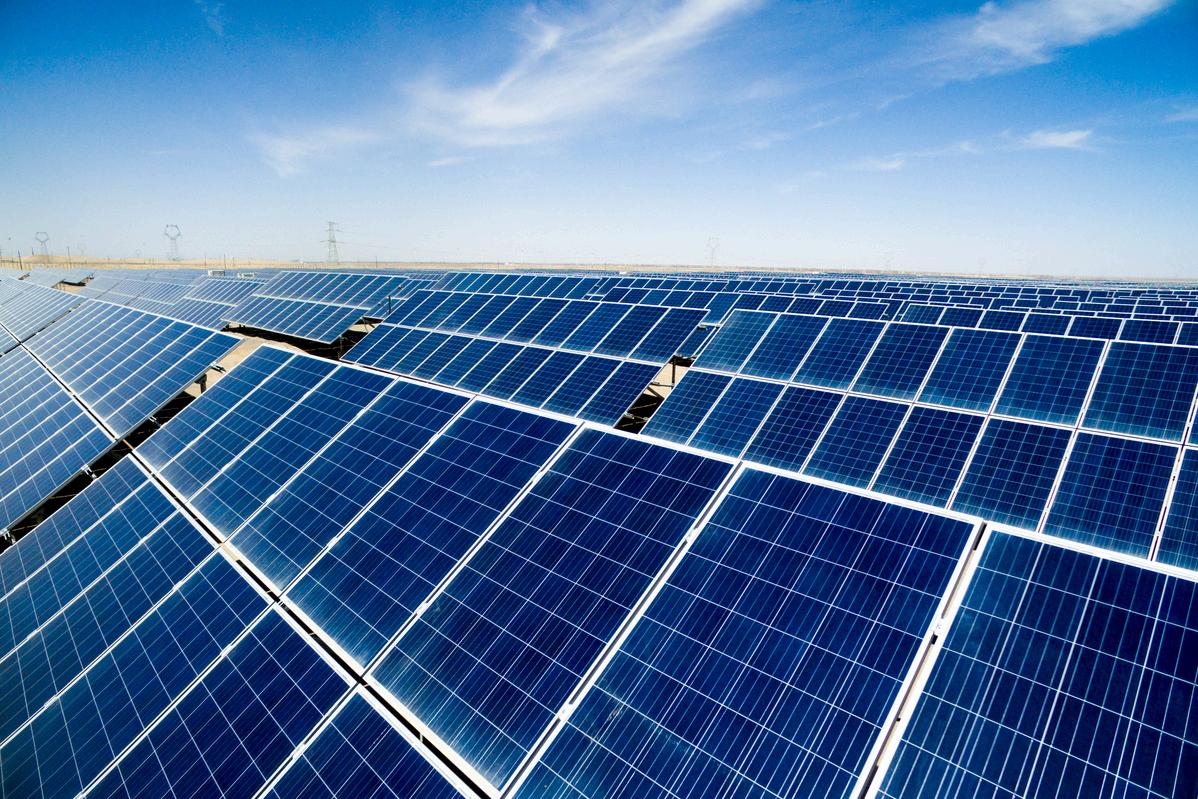

s such as debt-service coverage ratio (DSCR), internal rate of return t life coverage ratio (PLCR) are also important These help investors well the project can pay back its loans and generate profits over its R and IRR indicate a healthy and profitable asset Cost of capital is ower interest rates or access to green financing can improve project
policy stability is another key aspect Investors need clarity on future cess policies, and solar park development rules Uncertainty or es in regulations can delay projects and affect returns Central cies have been mostly supportive, but state-level implementation es delays
The rising focus on ESG (Environmental, Social, and Governance) investing is pushing more capital toward clean energy However, investors still need transparency in reporting and measurable climate impact Projects that can show avoided carbon emissions, community benefits, or efficient land use often receive more interest
Risk mitigation tools such as payment security mechanisms, insurance products, and partial credit guarantees are now more common These tools improve trust and allow more conservative investors like pension funds and insurance companies to enter the solar market
Overall, India offers a promising investment outlook for solar energy The sector benefits from high solar potential, strong government backing, and falling technology costs. Still, investors must carefully assess the bankability and financial health of each asset. Projects with solid contracts, experienced developers, sound finances, and clear policy support are most likely to attract long-term capital As India moves toward its 500 GW renewable energy goal, improving the quality and transparency of solar assets will be key to unlocking the next wave of investment
Solar power has become central to the clean energy transition However, while the pace of investment in solar projects continues to rise, the actual performance and long-term viability of these assets often lag behind expectations For solar financing companies, the challenge is not only deploying capital effectively but also ensuring that financed assets deliver reliable output over their operational life
In 2024, global corporate funding in the solar sector declined by 24% year-over-year to $26.3 billion from $34.4 billion in 2023, according to Mercom Capital Group The drop was largely driven by global macroeconomic challenges such as interest rate hikes and policy uncertainty. Despite this decline, the share of clean energy in new capacity additions continues to grow In the U S , for instance, over 90% of new power capacity added in early 2024 came from solar, wind, and battery storage
Venture capital investments in solar technologies remain resilient. Startups working on next-generation solar modules, energy storage, and asset management platforms continue to attract attention This indicates that innovation in solar asset performance and monitoring is becoming increasingly relevant to the financing conversation
India is one of the fastest-growing solar markets globally As of December 2024, the country had installed 209.44 GW of renewable energy capacity, with solar accounting for nearly 47% of this In FY24 alone, India added a record 24 5 GW of solar capacity, driven by large-scale utility projects and a growing rooftop segment
However, challenges persist. One of the biggest risks for solar financing in India is delayed payments from power distribution companies (DISCOMs) As of February 2025, DISCOM dues stood at ₹645 77 billion These delays impact the financial viability of solar developers, making it harder for them to service debt and maintain plant performance
For financing companies, funding solar projects is only the first step. Long-term returns depend on how well the asset performs Poor installation quality, inadequate maintenance, and system downtime can all impact output and revenue generation Studies show that a lack of maintenance can reduce a solar system’s output by up to 30% over time
To manage this risk, lenders are increasingly looking at postdisbursement asset tracking Real-time performance monitoring, predictive maintenance, and quality assurance mechanisms are being built into financing agreements These allow for early detection of underperformance and enable corrective actions before losses mount
In models like RESCO (Renewable Energy Service Company) and PPA (Power Purchase Agreement) financing, lenders and developers have a greater stake in the operational efficiency of the project Under these models, the developer owns and operates the asset, and payments are typically linked to the actual energy generated rather than the asset’s existence alone As a result, there is a strong financial incentive to
ensure that the system performs optimally throughout its life. Lenders also often build in strict performance monitoring, service level agreements, and maintenance protocols as part of the financing terms to safeguard returns and minimize the risk of prolonged downtime or performance degradation By tightly linking revenue to asset output, these models naturally encourage better installation quality, proactive maintenance, and continuous asset optimization
While utility-scale solar attracts most investment, residential and SMElevel projects are vital to meeting national targets Yet access to finance remains limited in this segment due to a lack of credit history and perceived technical risks
Structured financing models such as pay-as-you-save, lease-to-own, and performance-based lending are helping to overcome these barriers Integrating technical audits and performance checks within the loan lifecycle is also emerging as a best practice This ensures that even smallscale projects adhere to quality benchmarks and remain financially viable in the long term
The performance gap in solar assets between what is expected and what is achieved can be narrowed through a mix of financial and operational controls Lenders and asset owners must collaborate to set up robust reporting systems and maintenance schedules. Standardised data sharing between developers, operators, and financiers can help build a more reliable investment environment
By strengthening due diligence, incorporating post-financing support, and promoting transparency in asset performance, financing companies can play a central role in improving solar project outcomes
As solar capacity grows, the role of financing institutions is evolving It is no longer just about disbursing funds, but about enabling sustained performance. Linking capital to functionality ensures not just the success of individual projects but also the credibility and growth of the wider solar ecosystem For the sector to remain investable at scale, financial flows must align closely with operational reliability



As solar energy continues to expand in India, the long-term success of solar power projects depends heavily on how well they are maintained Operation and Maintenance (O&M) is a key part of ensuring solar plants perform efficiently for their full lifespan Indian developers often face a common question: should they manage O&M in-house or outsource it to a specialized service provider? Both options have their own benefits and challenges, and the smarter choice depends on several factors such as plant size, location, budget, and technical capacity
Managing O&M in-house gives developers direct control over their solar assets They can train their own staff, create customized maintenance plans, and respond quickly to technical issues. In-house teams can also build a deeper understanding of the specific site, leading to better preventive maintenance For large solar companies with multiple projects, an in-house team can help standardize operations, reduce costs in the long run, and ensure data privacy However, this option requires significant investment in skilled manpower, tools, and management systems. Small and mid-size developers may find it difficult to build and retain such capabilities, especially in remote locations
On the other hand, outsourcing O&M to third-party experts can offer several advantages. Professional O&M companies come with experience, specialized tools, and trained technicians They often use advanced software and remote monitoring systems to track plant performance in real-time Outsourcing also helps reduce the burden of recruiting and training technical staff It allows developers to focus on core business areas such as project development and financing. Outsourced contracts often include performance guarantees, making
service providers accountable for plant efficiency. However, outsourcing may result in less control over operations, and in some cases, response time to technical issues may be longer
In India, the choice between in-house and outsourced O&M also depends on regional factors For instance, projects located in regions with harsh climates or dust-prone areas require regular cleaning and faster servicing. In such cases, having a local in-house team may offer better reliability Conversely, outsourcing can be beneficial for projects in states with better access to skilled O&M vendors and logistics
Cost is another deciding factor. Outsourcing may seem cost-effective initially but can become expensive over time if not managed properly In contrast, an in-house setup may have higher upfront costs but offers longterm savings, especially for portfolios above a certain size
Some developers are now choosing a hybrid model. They keep key monitoring and data analysis in-house but outsource field-level maintenance to local vendors This way, they maintain oversight while still benefiting from specialized services
Ultimately, the smarter choice depends on a developer’s long-term vision, technical strength, and financial planning. For small projects or developers just entering the solar market, outsourcing may offer a practical path For large players with multiple assets, investing in in-house O&M can lead to better performance and cost efficiency over time What matters most is a clear strategy that aligns with the company’s goals and ensures that solar plants continue to deliver clean energy reliably and efficiently.



India’s solar sector has grown rapidly over the past decade, and with this expansion, asset management has become a critical part of sustaining performance, returns, and long-term viability. The recent evolution in regulatory frameworks is no longer just about enforcing compliance; it is now shaping how solar asset owners, developers, and investors are rethinking their operations and driving smarter asset management strategies across the country
In recent years, India's regulatory landscape has matured significantly The Green Open Access Rules 2022 and amendments to the Electricity Rules in 2023 have expanded the market for commercial and industrial (C&I) consumers, making it easier for them to procure solar power This shift has pushed solar asset managers to improve forecasting, metering accuracy, and grid compliance. The introduction of energy accounting mechanisms and deviation settlement regulations by state electricity regulatory commissions has increased pressure on solar project operators to manage generation with greater precision
Another key policy shift came with the implementation of ALMM (Approved List of Models and Manufacturers) for module procurement and the PLI (Production Linked Incentive) scheme, encouraging domestic manufacturing These policies have implications for long-term asset performance and warranty management Asset managers are now integrating procurement traceability and quality assurance protocols into their workflows to ensure compliance with national standards while optimizing operational lifecycles
The focus on digitalization is also growing Regulatory emphasis on transparency and data reporting has accelerated the adoption of SCADA systems, real-time monitoring tools, and AI-driven predictive maintenance Advanced analytics help identify underperformance, schedule proactive maintenance, and reduce downtime. This is especially important for large portfolios For instance, managing a 500 MW solar asset spread across multiple states requires consistent compliance with different grid codes, deviation penalties, and state-specific net metering rules The regulatory drive for better reporting standards has indirectly led to smarter, techenabled O&M practices
Financial regulations have also begun to influence asset management Lenders now seek higher levels of transparency and risk mitigation, especially for large-scale projects Asset managers are expected to deliver not only on energy yield but also on regulatory adherence, ESG reporting, and revenue assurance through accurate billing and energy accounting. This has prompted the integration of software platforms that combine technical, financial, and compliance tracking in one dashboard, giving both developers and investors a real-time view of asset health
Furthermore, India’s push for grid stability, especially through its Deviation Settlement Mechanism (DSM), has mandated better forecasting and scheduling from solar power producers Asset managers are required to provide daily and intra-day forecasts, adhere to deviation bands, and avoid penalties This has encouraged collaboration with energy analytics firms and weather service providers to enhance accuracy
The evolving compliance landscape is no longer a burden; it is a foundation for building confidence among investors, off-takers, and regulators For India to meet its ambitious renewable energy targets and maintain grid reliability, solar asset management must continue to evolve in sync with regulations. Smarter compliance is emerging as a competitive advantage, transforming how 500 MW and larger portfolios are operated across India




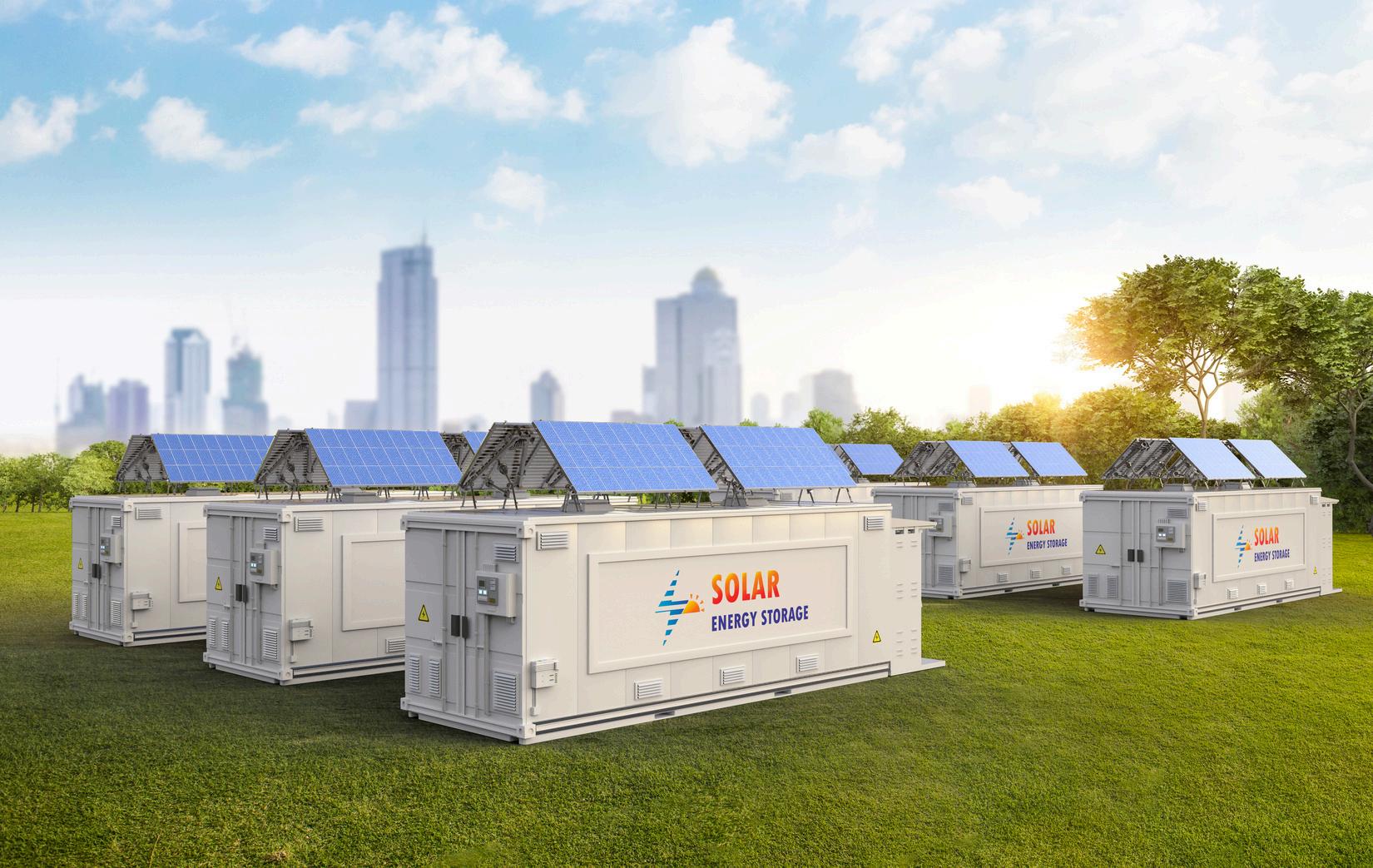
Over the years, India has taken some commendable steps in fulfilling its energy transition goals Blessed with abundant renewable energy (RE) sources, India added around 100 GW of RE capacity in the last decade This has helped in bridging the demand-supply gap, while reducing dependence on fossil fuels More recently, it has ranked 4th globally in installed solar power capacity, which rose from 21,651 MW in 2018 to 70,096 MW in 2023 With advancements in technology and economies of scale, RE sources such as solar, are one of the more affordable sources of electricity in the country
Several growth drivers have enabled India to realise its solar energy potential and helped revolutionise the power sector Besides technological innovations, the government’s policy measures have boosted the adoption of solar across the country Its push for the localisation of photo voltaic (PV) module manufacturing chains is likely to play a significant role in this green transition journey. A testament to how government policies are focused on further strengthening India's position as a solar powerhouse can be seen in the PLI outlay of INR 24,000 crores allocated to the National Programme on High-Efficiency Solar PV Modules - introduced to boost domestic manufacturing, this will help in achieving manufacturing capacity of GW scale in High-Efficiency Solar PV modules While substantial addition in RE capacity has been achieved, there is potential to accelerate the pace of adoption, if challenges around Land Acquisition, Rights of Ways and Connectivity are resolved through policy intervention On their part, energy players in the country have prominently demonstrated innovation in the overall project designs, mounting structures, cleaning systems and data analytics, collectively leading to solar tariffs in the country being among the lowest in the world As part of Apraava’s commitment to supporting India’s robust energy transition journey, we will continue to leverage the adoption of cutting-edge technology solutions in strategic partnerships with local PV module suppliers and EPC players
Even as India progresses in its solar journey, the success of the ongoing energy transition hinges very much on the ‘on-demand’ availability of renewable energy, which is only possible with the help of cost-effective and reliable energy storage systems Consequently, the government has shifted its focus from strengthening RE to RE-plus storage, which is essential for achieving the goal of 500GW capacity. It has set itself a target of around 60 GW/336 GWh for battery storage and pumped hydro storage solutions under the National Energy Storage Framework, while aiming to add 45-50 GW of firm and dispatchable RE capacity annually based on hybrid arrangements
With utilities increasingly demanding renewable energy as per their requirements either on a round-the-clock basis or to meet peak consumption requirements, focusing on Battery Energy Storage System (BESS) and Pumped Hydro Systems will be key to continuing the momentum A strong ecosystem of well-designed lithium-ion-based batteries and the advancements in sodium-ion batteries are promising developments in the storage space
The grid-scale battery storage has already become more viable, in particular, with the VGF being provided by the Central Government, as we have seen standalone BESS tenders issued by several states. The Government guidelines, on having at least 10% storage with every solar tender will only increase the BESS penetration, which is critical for the grid reliability There could also be an emphasis on reducing the turnaround timelines from project conceptualisation to the PPA signing processes. Apraava would ideally aim at investing an equivalent of 1-1.5 GW per year in the sector over the next few years We also plan to participate in standalone BESS projects as well as hybrid projects comprising a mix of storage & solar and wind
When it comes to the energy transition, the challenges India faces today have created opportunities of accelerating the implementation of various advanced technologies such as cost-effective grid-scale battery storage, pumped storage hydropower plants, rooftop solar, behind-the-meter solutions, smart meters, smart grids, etc To date, several programmes on promoting domestic manufacturing of solar components that were traditionally imported have also been set up
These developments will not only help India bridge the energy gap but also become a more self-reliant economy Taking a long-term view will help the nation take decisive strides in accelerating solar adoption and bridging the energy gap


Director – Business Development and Commercialr

For the last few years, availability of funding for Indian solar projects has not really been a challenge, rather finding ‘quality solar projects’ for investors has been the difficulty India over the years has become an attractive destination for global investors in the solar space Some of the reasons for this has been: green mandates of the investors (both domestic and foreign), our solar irradiation levels, greater awareness of the benefits India offers as the largest democracy, supportive government policies, well established regulatory regime and presence of strong rule of law
Though, its not been all rosy and the phenomenal growth the solar sector has seen since 2011 has come with its fair share of challenges Some of the issues which stakeholders in this sector have been grappling with are procuring land, evacuation arrangements, construction risks (ensuring timely commissioning along with quality of equipments and the construction quality), domestic procurement of modules (on account of government policy push to promote domestic manufacturing of solar modules), performance risk and offtake risks
The inception of the solar power in India was with the government supported feed in tariff and thereafter over the last decade or so the tariff for utility scale projects has seen a steep fall (to say the least) The developers and the investors over the course of development of this sector realized that it was critical to focus on sustained generation and minimal downtime in order to maintain the required returns despite falling tariffs The experience of some of the developers (both backed by domestic promoters and international funds) got them to optimize costs without compromising on quality, control financing costs by refinancing post the construction phase, improve the project design and standards In addition, they realized the importance of ensuring a strong, steady and quality supply chain for setting up solar projects
This learning has come from a number of solar projects in the Indian market performing at lower performance levels (as against initial estimates) on account of suboptimal execution With these experiences, the developers, investors and lenders have come to
acknowledge that higher construction standards, quality of solar equipment and efficient execution are essential ingredients to ensure that a solar project can generate stable cash flows And, thereby being crucial to get a higher return on investment
There is no dearth of liquidity (from both global investors and lenders) in the Indian market specifically for solar project in India However, the investors have realised the importance of durable assets which can operate sustainably for the life of the project and provide good returns The Indian solar market has indeed evolved substantially and now you see investors providing equal (or greater) importance to quality of the solar assets in addition to the credibility of the offtaker (preference to SECI/NTPC projects as against discom projects), capacity of the project, etc And, thus in addition to legal and regulatory due diligence also conduct a detailed technical due diligence on inter alia: (a) performance ratios; (b) equipment quality and degradation; (c) plant design and installation quality; (d) operations & maintenance (O&M) practices
It seems that the investors have now recognized that the quality of the solar assets in fact may be the distinguishing factor for evaluating good solar projects which make them more attractive for investment


India’s solar energy landscape has seen rapid growth, with over 70 GW of capacity installed nationwide. But as solar assets mature, the spotlight is shifting from installation speed and cost to long-term plant performance and ROI In this new era, asset management has become the backbone of solar success.
At Fourth Partner Energy, we’ve seen firsthand how proactive and datadriven asset management can significantly improve plant output, reduce costs, and deliver stronger returns to clients Managing a solar plant well is no longer a nice-to-have - it’s a strategic necessity
The first step in transforming asset performance is achieving complete visibility Fourth Partner Energy developed Solarlink, our proprietary asset monitoring platform, to centralize data from inverters, energy meters, and IoT devices across all sites
With Solarlink, we can:
Detect faults in real time and resolve them quickly
Benchmark performance across locations and identify underperforming assets
Provide transparent, easy-to-understand reports to clients
By identifying and addressing issues early, we’ve been able to reduce downtime and maximize generation, which directly improves the project’s financial performance
Preventive and predictive maintenance play a key role in optimizing ROI By analyzing data trends from plants, we can schedule cleaning, component replacements, and inspections before failures occur.
For example, we’ve digitized the entire plant cleaning process using mobile forms Site engineers upload before-and-after photos, which are reviewed by O&M managers before approval This ensures accountability, reduces back-and-forth, and speeds up decision-making
In a distributed solar portfolio, speed matters Whether it’s responding to a fault or generating an energy invoice, every minute counts.
We’ve implemented automation across several workflows:
Automated ticketing and escalation reduce response time
Energy invoicing is based on real-time meter data, eliminating manual intervention
Performance trackers provide clients and internal teams with live status updates.
In one instance, these systems helped us cut issue resolution times by more than 50%, while also boosting client satisfaction
Smarter Decisions with Data
Beyond daily operations, asset management helps inform strategic decisions:
When to upgrade aging inverters or panels.
How to allocate maintenance budgets across sites
Which plants are candidates for expansion or repowering
Data-backed recommendations give clients confidence to make longterm CAPEX investments that improve performance and lower LCOE (Levelized Cost of Energy)
Results That Speak for Themselves
Our data-driven approach has delivered tangible results:
Up to 8% higher generation on actively managed plants
Improved ROI through optimized manpower deployment and predictive maintenance.
Greater transparency and trust with clients due to consistent reporting and fast response times.
These outcomes are not just technical improvements, they translate to stronger financial performance, making solar a more attractive investment for both developers and buyers.
Way Forward

As the solar sector matures, the role of AI, automation, and analytics will only grow Asset management will no longer be seen as postinstallation support - it will be a key driver of competitive advantage.
At Fourth Partner Energy, we are committed to building this future, one where performance is predictable, data drives decisions, and every plant delivers on its promise


From 2 82 GW in 2014 to the current 107 95 GW, India’s solar footprint has grown exponentially in the past decade Interestingly, with a contribution of 82.39 GW, this growth has primarily been driven by ground-mounted solar installations However, to continue energy production over a typical lifespan of 25+ years, these large-scale solar plants need more than just initial investments Asset management strategies are increasingly being adopted by such plants to optimise performance, guarantee dependability, and secure long-term returns.
Evolving technologies and market shifts are driving improvements in the efficiency and, hence, RoI of solar plants Cutting-edge technologies such as real-time monitoring and reporting through supervisory control and data acquisition (SCADA) systems or dedicated software enhance visibility into system operations, support early fault detection, minimise downtime, and contribute to improved performance and reliability of solar assets


computing now enables the effective management of massive ts of data, while Internet of Things (IoT) devices facilitate remote g When high-resolution visual inspections are required for thermal g to check performance at a cell level, aerial imagery with drones is acquired.

Beyond traditional practices such as module cleaning, spare parts management, and general upkeep, asset management in the solar industry now encompasses comprehensive operating, monitoring, upgrading, and maintenance strategies supported by digital tools to optimise power production and maximise the return on investment (RoI) Asset owners are employing qualified experts in different fields, including analytics, data science, electrical standards, and photovoltaic systems, for timely reporting and accurate tracking of plant availability and performance metrics
Minimising downtime and reducing inventory costs are also an integral part of asset management that requires efficient spare parts management. This means maintaining supplies of necessary components such as fuses, connectors, breakers, combiner boxes, and inverters, which have a lifespan of 10–15 years Equally important is the timely procurement of slow-moving parts, including solar panels and mounting structures, to manage any unforeseen malfunctions, ensuring continuous energy generation
, artificial intelligence and machine learning are making system ons more intelligent and effective, enhancing overall performance porting large-scale data analysis, performance improvement, and orecasting.
nergy generation calls for a multi-decade commitment rather than ime investment Thus, strategic planning is crucial to achieving ntial financial returns over time For this, the entire spectrum of management costs incurred over the course of the plant’s life be taken into consideration when estimating the budget. Cost–analyses can be used to measure the financial benefits of lar behaviours
In summary, prudent asset management by solar plants is an investment that yields several returns in the form of increased energy output and RoI, reduced malfunctions, and prolonged lifespans Although efficient asset management in solar plants comes with certain initial and recurring costs (for equipment, systems, and manpower), these are negligible in comparison to the long-term financial gains
Sarita Vijayvargiya is a Consultant in the Renewables group at the Center for Study of Science, Technology and Policy (CSTEP), a research-based think tank



Group Executive Director and CEO Hartek Group
Rapid digitalization and AI tools are transforming solar O&M from reactive to proactiveperformancemanagement
Predictive maintenance, real-time monitoring, and smart grids ensure higher efficiency and reducedoperationaldowntime
Strategies like asset diversification and advanced forecasting tackle climate variability andenhancelong-termsolarreliability
What is the state of solar O&M in India, and what trends are shaping it?
India’s solar O&M and management sector is evolving quickly with a strong focus on digital tools and data-led decision-making Developers are increasingly leveraging predictive maintenance, real-time analytics, and automation to improve performance and reduce downtime These advancements are helping shift O&M from a reactive to a proactive model, especially through the use of centralized monitoring platforms and IoT integration
Another key trend is the growing preference for outsourcing O&M functions to specialized service providers, particularly by smaller developers who lack in-house capabilities At the same time, larger developers continue to expand internal teams for better control and standardization across their portfolios
Additionally, the market is seeing a push toward data-driven management, including benchmarking tools and performance modelling, aimed at maximizing returns These trends are creating a more sophisticated and performance-focused O&M landscape in India’s solar sector.
What ensures performance and sustainability of solar assets in India?
To ensure optimal performance and financial sustainability of solar assets across diverse Indian conditions, several strategies are being adopted One key approach is the use of advanced technology, such as AI-powered predictive maintenance and monitoring systems which enable real-time diagnostics & reduce downtime Additionally, there is a focus on adapting to changing environmental factors, including long-term variations in solar
irradiance, by implementing future-proofing strategies, such as upgrading infrastructure and using adaptive technologies to maintain efficiency over time
Another important factor is the growth of local manufacturing to ensure reliability and costeffectiveness in diverse regions Moreover, ongoing technological innovations are optimizing system efficiency and reducing costs, which is crucial for financial sustainability These strategies collectively help maximize energy generation while minimizing operational and financial risks
How is Hartek using digital tools to improve efficiency and cut downtime?
Our company is leveraging AI-driven analytics and smart grid technologies for real-time monitoring, predictive maintenance, and dynamic load management. These tools enable early detection of issues, allowing for proactive maintenance and minimizing downtime By optimizing asset performance and extending lifespan, we reduce operational costs Smart grids also stabilize the grid and mitigate the intermittency of renewable sources like solar and wind Additionally, energy storage advancements help store excess energy for peak demand or low-generation periods These digital strategies enhance efficiency, reliability, and support India’s renewable energy goals for 2030
What are challenges of climate risk and asset degradation in India’s solar sector?
India's solar sector is increasingly exposed to risks from climatic variability and asset degradation A recent analysis revealed a 3% to 10% decline in solar irradiance across many regions in 2024 due to increased cloud cover and prolonged monsoons This directly impacts energy generation and financial predictability
To mitigate these risks, developers are investing in enhanced weather forecasting models to better predict irradiance fluctuations There’s also a strategic move toward geographical diversification of solar assets to minimize location-specific climate impacts Additionally, the industry is adopting advanced PV technologies and performance monitoring systems to combat asset degradation.
By proactively integrating these measures, the Indian solar market is working to future-proof
itself against long-term climatic shifts and operational wear, ensuring energy reliability and sector resilience
How can data analytics and AI improve the value and lifespan of solar assets in India?
Data analytics and AI-driven insights significantly enhance the performance and lifespan of solar assets by enabling real-time monitoring, predictive maintenance, and dynamic load management These capabilities improve operational efficiency, reduce downtime, and extend asset life Moreover, they contribute to grid stability by optimizing energy generation and distribution, addressing the intermittency challenges of solar power When integrated with advancements in energy storage, these technologies also allow surplus energy to be stored and used during peak demand. Together, AI, data analytics, and smart grid innovations help streamline operations, lower costs, and maximize returns supporting India’s goal of expanding renewable energy capacity by 2030
How can data analytics and AI enhance the value and lifespan of solar assets in India?
India’s solar asset management sector is set to evolve with greater emphasis on digitalisation, predictive maintenance, and energy storage integration With solar capacity projected to rise sharply, asset owners are focusing on enhancing plant performance through advanced analytics and AI-driven monitoring systems
Hartek is proactively aligning with these trends by expanding into emerging areas like floating, rooftop, and land-based utility solar projects, while also investing in hybrid systems and battery storage to maximise uptime and energy reliability With over 10 GW solar connected to the grid, Hartek is leveraging its engineering expertise to offer comprehensive O&M services and digital tools that improve lifecycle performance
As policy frameworks mature and the industry shifts towards decentralised and data-driven models, Hartek is well-positioned to lead this transformation by driving innovation, ensuring grid resilience, and helping India transition to a more sustainable energy future

India’s solar growth is fueled by advanced technology, supportive policies, and increasing investor interest.
Digitalization and predictive maintenance are boosting plant efficiency, lowering costs, and improving energy output
Skilled manpower, regulatory stability, and strong asset performance are vital for attracting long-term investments
How do you view the current market dynamics of solar asset management in India, and what key trends are attracting investor interest in this space?
India’s solar asset management market is experiencing rapid growth in line with the target of installing renewable energy (RE) capacity of 500 GW by 2030 This momentum is driven by the emergence of high-efficiency solar cells and modules; a strong focus on their domestic production; and policies that encourage domestic as well as foreign investments in solar and energy storage technologies The market is also adopting innovative financing instruments and sharpening its focus on sustainability and energy access The installed solar capacity in the country grew from 2.82 GW in 2014 to 97 86 GW in December 2024, including an addition of 24.34 GW of solar power capacity in 2024 alone, a 33 47% increase over the previous year
What operational and financial challenges do solar asset managers face in India, and how does Apraava Energy mitigate these risks?
With the type of RE growth in India, the major challenge is quality of services due to shortage of skilled manpower / O & M teams which impacts the safety, reliability & performance of the plant, and continuous
increase in cost of services, which is paramount for any investor Further, managing distributed assets is
complex requiring engagement with local stakeholders, ensuring plant security, maintaining work quality, and adapting to extreme weather conditions like dust storms and cyclonic rains. Data quality management in large power plants is also critical; delays or inaccuracies can lead to financial losses. The lack of Computerized Maintenance Management Systems (CMMS) across the industry further increases equipment failure risks, reduces efficiency, and causes costly downtime
Financially, challenges include securing affordable capital, coping with high initial investment costs, and managing fluctuating returns on investment
At Apraava, we’ve a structured approach to address these issues. We engage independent service providers through competitive bidding for comprehensive asset management, overseen by our in-house asset managers
We prioritize a safe and inclusive work environment Before site work begins, teams receive thorough field and classroom training on Apraava’s safety and technical protocols Our on-ground teams are encouraged to suggest ways to reduce downtime, cut costs, and enhance performance. This culture of safety, empowerment, and mutual respect helps us retain talent over the long term
We’ve also digitalized reporting and implemented CMMS to enable proactive maintenance and minimize downtime Strong relationships with local stakeholders further support smooth operations, especially in resolving ‘right of way’ issues

The installed solar capacity in India grew from 2.82 GW in 2014 to 97 86 GW in December 2024, including an addition of 24.34 GW of solar power capacity in 2024 alone, a 33.47% increase over the previous year "
How important are digitalization and predictive maintenance in improving asset performance and investment returns in utility-scale solar projects?
Digitalization and predictive maintenance are essential for enhancing asset performance and maximizing returns in utility-scale solar projects By enabling proactive maintenance and data-driven decision-making, they help optimize operations, reduce costs, and increase energy yield
Advanced analytics and Artificial Intelligence (AI) shift the approach from reactive to predictive maintenance, ensuring continuous performance optimization across the plant’s lifecycle. AI-supported protocols such as smart cleaning schedules based on real-time data can boost energy generation efficiency by 3–5% annually while reducing maintenance costs
Precise forecasting, powered by AI and Machine Learning algorithms, analyzes realtime sensor and meteorological data to optimize solar output and support grid stability. This enhances the reliability of solar integration into the grid and helps operators manage the intermittent nature of solar energy more strategically
What factors do investors prioritize when evaluating solar assets in India, and how can companies meet these expectations?
Investors prioritize a combination of factors when evaluating solar assets in India, including financial performance, technical feasibility, and the overall investment landscape Key factors include the asset’s return on investment, the developer’s financial health and track record, access to financing, government subsidies, availability of land and grid infrastructure, and energy offtake agreements
To meet these expectations, companies must demonstrate strong operational performance and sector expertise. Investors typically look for
Proven asset performance over time, supported by a track record of timely energy delivery and payments.
Regulatory compliance, including certifications, licenses, and adherence to the latest guidelines from the CEA (Central Electricity Authority) and state DISCOMs (Distribution Companies)

How does regulatory and policy stability influence asset management strategies and foreign investment in India’s solar sector?
Regulatory and policy stability plays a critical role in shaping asset management strategies and attracting foreign investment in India’s solar sector A predictable and transparent policy environment builds investor confidence,
What innovations or business models are reshaping the market and enhancing solar asset value in India?
As the world accelerates its shift towards cleaner energy, a wave of technological innovations is transforming the solar power landscape, enhancing both its efficiency and accessibility. Technological advancements such as higher efficiency solar panels are


Significant growth in India's C&I rooftop solar market driven by demand for clean energy.
Advanced monitoring, predictive maintenance, and hybrid models ensure efficiency, minimizing downtime and costs
Technological innovations, government policies, and smart grids will drive future developments in solar asset management
How has solar asset management in India’s C&I sector evolved in recent years, and where does it stand today?
India's C&I rooftop solar sector has seen significant growth, with the sector accounting for a large portion of the country's total rooftop solar installations This growth is driven by the increasing demand for clean and cost-effective energy solutions among businesses.
Key Developments and Current State:
The C&I rooftop solar market in India has witnessed rapid growth in recent years, with significant capacity additions, especially between April 2021 and July 2023. C&I consumers account for a large share of rooftop solar installations in India, indicating the sector's importance in the country's renewable energy transition The government and financial institutions are playing a crucial role in supporting C&I rooftop solar projects through credit lines and other incentives Adoption of largeformat modules, bifacial modules, and battery storage systems is gaining traction in the C&I segment to enhance energy generation and storage capabilities. While the C&I sector is a major driver of rooftop solar, it also faces challenges such as policy inconsistencies across states and financing hurdles The Indian C&I rooftop solar market is expected to continue its growth trajectory, with potential for significant capacity additions in the coming years
What are the main challenges in managing C&I solar assets, and how does AMPIN Energy Transition address them through O&M strategies?
Managing Commercial & Industrial (C&I) solar assets presents challenges including module quality, labour shortages, financing hurdles, and rising costs AMPIN Energy Transition addresses these by offering O&M strategies that leverage advanced technology and a hybrid O&M model, focusing on proactive monitoring, predictive maintenance, and efficient resource management
Challenges in Managing C&I Solar Assets:
Ensuring the long-term performance and reliability of PV modules is crucial for maximizing energy production and asset lifespan Finding and retaining qualified O&M personnel is a persistent challenge, particularly in a growing solar market. Access to funding for C&I solar projects can be difficult, especially in the face of evolving policies and regulations Increasing costs of materials, labour, and equipment can impact project viability and profitability Managing the increasing complexity of PV systems, including advanced technologies and data analytics, requires specialized expertise
AMPIN Energy Transition's O&M Strategies:
Combining in-house O&M teams with thirdparty service providers allows for flexibility and access to specialized expertise Utilizing advanced monitoring systems, data analytics, and predictive maintenance techniques to optimize performance and minimize downtime Implementing real-time monitoring systems to track performance, identify potential issues, and trigger alerts for timely intervention Using data analytics and machine learning to predict potential equipment failures and schedule maintenance proactively, minimizing downtime and repair costs. Optimizing water usage for module cleaning, managing waste disposal, and procuring spare parts effectively to reduce costs and improve efficiency

From overcoming module degradation and workforce gaps to navigating challenges, AMPIN Energy Transition tackles O&M obstacles with a strategy blending technology and responsibility "
How does AMPIN ensure the optimal performance and longevity of solar PV assets, and what role do predictive maintenance and real-time monitoring play?
AMPIN ensures optimal performance and longevity of solar PV assets through a combination of real-time monitoring, predictive maintenance, and advanced technologies Real-time monitoring allows for continuous tracking of performance metrics, while predictive maintenance uses data analysis and AI to anticipate potential failures and schedule proactive interventions This approach reduces downtime, increases uptime, and improves overall system efficiency and profitability.
AMPIN uses real-time data integration to continuously monitor key performance indicators (KPIs) of solar PV systems This data allows for immediate identification of performance deviations and trends, enabling proactive adjustments to optimize energy yield AMPIN incorporates advanced technologies like drone-based thermal imaging and AI-driven soiling detection These technologies enable more efficient and accurate assessment of system health and performance By shifting from reactive to predictive maintenance, AMPIN significantly reduces failure rates, increases uptime, and improves the profitability of its renewable energy projects This proactive approach also minimizes the need for emergency repairs and associated costs, leading to a more efficient and cost-effective operation.
Here's a more detailed look:
1 Predictive Maintenance:
AI and ML algorithms analyse data from solar installations (e g , temperature, solar radiation, humidity, panel performance) to identify potential issues before they escalate into costly failures This allows for proactive maintenance, minimizing downtime and reducing maintenance costs. Example: AI can detect anomalies in solar panel outputs or equipment, triggering maintenance actions
2 Smart Energy Management:
AI optimizes energy production and consumption, ensuring efficient energy distribution and reducing waste It can manage energy storage systems intelligently, optimizing charging and discharging for maximum efficiency and lifespan AI also helps shift energyintensive activities to periods of peak solar generation.
3 Improved Forecasting:
AI can analyse vast amounts of data (e g , satellite imagery, historical weather patterns, temperature changes) to provide more accurate solar power generation forecasts This improves energy trading, grid management, and solar farm operations AI-driven forecasting can reduce prediction errors by up to 30%
What trends will shape the future of solar asset management in India, and how is AMPIN positioning itself for these changes?
The future of solar asset management in India will be shaped by technological advancements, rising demand for clean energy, and supportive government policies AMPIN is positioning itself for these changes by focusing on the C&I solar segment, adopting innovative pricing and revenue models, and leveraging its existing infrastructure and expertise
Key Trends Shaping the Future of Solar Asset Management in India:
Innovations in solar panel technology, storage solutions, and smart grid technologies will continue to drive down costs, improve efficiency, and enhance reliability Increasing demand for clean energy, driven by environmental concerns and government targets, will fuel the growth of the solar sector Government initiatives, such as the National Solar Mission and state-specific policies, are creating a favourable environment for solar investment and development Efforts to recycle end-of-life solar panels and minimize environmental impact are gaining momentum.
In India’s solar landscape, C&I project complexity demands smarter solutions. Real-time analytics and a data-driven maintenance approach transform performance issue detection minimizing downtime and risk"
How AMPIN is Positioned for these Changes:
AMPIN is capitalizing on the increasing demand for solar energy solutions in the commercial and industrial (C&I) sector, where companies seek to reduce electricity costs and hedge against volatile grid prices AMPIN has adopted a cluster-based approach to renewable energy development, concentrating solar, wind, and storage assets in geographic hubs AMPIN's existing infrastructure and expertise in solar asset management, including operations and maintenance, allow it to efficiently manage and optimize solar projects AMPIN is likely to form partnerships and collaborate with other companies to leverage technological advancements and expand its reach.



of Asset Management Blueleaf Energy
India Country Head
Blueleaf Energy
India s solar asset management is evolving with digital tools and predictive maintenance
Blueleaf Energy mitigates risks through AI enabled monitoring solution, diversified offtakes, and strong due diligence.
Policy stability, virtual PPAs, and hedging boost investor confidence and asset value
What is the current state of solar asset management in India, and what trends are driving investor interest?
Solar asset management in India is maturing as the sector scales up. The focus has shifted from simply building projects to optimizing operations, with digital tools, predictive maintenance, and data analytics becoming key Solar asset management is transitioning from being man-driven to data-driven. Investors are drawn to professional asset management, ESG compliance, and techenabled performance tracking. Major trends include portfolio consolidation, a rise in hybrid and merchant models, and a growing secondary market for operational assets
What challenges does Blueleaf Energy face in managing solar assets, and how are they mitigated?
Major operational challenges are grid curtailments, equipment degradation/ obsolescence, O&M operational efficiency, weather unpredictability and regulatory delays
Major financial challenges are payment delays, tariff uncertainty, and interest rates
Blueleaf Energy is about to commission its first project this summer. It plans to mitigate operational risks by leveraging digital tools and data analytics, powered by AI and ML models for predictive maintenance and realtime asset monitoring This approach provides
deep insights into the health and performance of operational assets Additional measures include securing insurance and extended warranties for critical components, along with conducting regular internal and external audits and performance benchmarking to maintain high efficiency
To mitigate financial risks, Blueleaf Energy diversifies off takers across SECI PPAs, C&I agreements, and open market sales, while ensuring efficient project financing to enhance returns and reduce exposure
How key are digitalization and predictive maintenance for India’s solar asset returns?
Digitalization and predictive maintenance are crucial and very important These technologies enable:
Real-time monitoring for early detection of issues, reducing downtime
AI-driven predictive maintenance to forecast equipment failures and optimize maintenance schedules, minimizing costly repairs.
Data analytics to improve operational efficiency, ensuring plants perform at peak capacity.
This leads to higher energy yields, reduced operational costs, and ultimately better financial returns
How do you evaluate asset quality during acquisitions, and what due diligence is critical in the Indian market?
Asset quality during acquisitions is evaluated by assessing technical performance, contractual strength, regulatory compliance, and financial health. Key due diligence parameters are: -
Technical – Plant design, equipment quality/degradation levels and historical generation data

What innovations or models will enhance solar asset value and investor confidence in India?
Regulatory and policy stability are important for investors to deploy large amounts of capital in the renewable energy space Utility-scale renewable energy is an infrastructure asset requiring significant capital investment upfront which provides yield for a long period of time The return levels in such investments are typically lower than the “market-based” returns for other sectors as the presence of long-term agreements for power sale mitigates the market risk However, if the regulation is not stable and impacts the revenue or costs of the projects, it creates a perception of higher risks for the investors resulting in lower valuations or higher power prices There have been several changes in the recent past, e g several custom duties and anti-dumping duties being imposed on equipment in the value chain of solar projects The deviations settlement mechanism rules have continuously evolved impacting the costs of renewable energy plants ultimately reducing the returns from these projects
What innovations will boost solar asset value and investor confidence in India?
Introducing a conducive regulatory framework for virtual corporate PPAs should enhance the asset value for investors In addition to continuation and strengthening of load following PPAs – Firm and Dispatchable Renewable Energy (FDRE) type schemes –introduction of hedging products like forward and futures markets will enable more investments by providing tools to manage market exposure

What makes Kosol TOPCon modules more efficient than traditional panels?
Kosol Energie is driven by a vision to accelerate renewable energy adoption through cuttingedge, high-performance, and reliable solar products that deliver the lowest Levelised Cost of Energy (LCOE) Our innovation efforts focus on minimizing cell-to-module losses and reducing long-term degradation, ensuring superior performance throughout the lifecycle of our modules
Our Sun Plus Series of N-type TOPCon modules represent a significant technological leap, offering module efficiencies up to 24% and power outputs from 585W to 620W all within the same footprint as conventional 550W panels. This compact, high-output design enhances energy density without requiring additional installation space, making it ideal for spaceconstrained utility, commercial, and rooftop projects
N-type TOPCon technology: with low degradation, high bifaciality, and superior temperature behavior (temperature coefficient of -0 26%/°C)
Optimized ribbon and cell design: to reduce resistive losses and improve conductivity
High-transmittance glass and advanced encapsulants: for extended durability
Precision lamination processes: that enhance structural integrity
Top-tier junction boxes, cables, and connectors: to ensure long-term operational reliability
Rigorous in-house testing and adherence to BIS, IEC, and global certifications These innovations, backed by real-world field data from India and global markets, ensure that Kosol modules deliver consistent performance, minimal degradation, and exceptional ROI for years to come
How has GW-scale capacity helped Kosol meet rising solar demand?
Kosol Energie views manufacturing excellence not just as a matter of scale but of precision, reliability, and innovation Expanding to a 3 10 GW manufacturing capacity has empowered us to meet the surging demand for solar energy by enabling high-volume production without compromising on quality
Kosol’s TOPCon modules offer up to 24% efficiency, 620W output, minimal degradation, high reliability Its 3 10 GW AI-driven facility ensures fast, precise, and scalable production for global demand Rigorous AI-led quality checks make Kosol panels durable across extreme environments
Our expansion incorporates fully automated, AIdriven production lines that enhance productivity, reduce human error, and ensure consistent quality through intelligent real-time inspections This allows us to fulfill large-scale, high-specification orders with faster turnaround times whether for utility-scale, commercial, or residential projects
Key advantages include:
Economies of scale: that make pricing more competitive
High precision production: meeting the stringent standards of global markets, including NTPC’s Category-1 certification
Improved supply chain efficiency: and reduced project execution time
Alignment with Make in India initiatives: to strengthen domestic and export capabilities
Through this advanced capacity, Kosol is not only meeting current demand but also preparing to scale sustainably for the future
How do automation and checks ensure durable panels in all environments?
Kosol Energie ensures exceptional durability and reliability of its solar panels through advanced automation and multi-levelAI-basedqualitycontrol Our production is engineered with high-precision processes that eliminate variability and maintain uniform build quality
We employ a 6-stageAI-drivenElectroluminescence (EL) testing protocol which is a rare and stringent quality assurance method in the solar industry This detects microcracks and anomalies at every step, ensuring only the best modules reach the market
Further, our panels undergo:
Thermal cycling tests
Humidity and moisture resistance evaluations
Mechanical load and impact stress tests
These rigorous simulations prepare our modules to withstand extreme climates whether scorching heat, high humidity, or wind loads making them highly dependable across diverse geographic regions
What strategies helped Kosol Energie enter and serve the USA and Europe?
Kosol Energie has successfully entered global markets through a focused strategy built on customer-centric innovation, market localization, and strategic alliances We prioritize product reliability and post-sale support, ensuring that
our clients not only receive high-performing systems but also long-term value
Adapting to local market standards by securing global certifications and customizing product offerings
Building partnerships with local distributors and service providers to ensure seamless logistics and after-sales support
Participation in international trade shows and targeted marketing campaigns to build brand visibility
Competitive pricing models and financing support to make our systems accessible
Strong emphasis on sustainability, which resonates with environmentally conscious consumers in the West
Our reputation for reliability, reinforced by positive referrals from existing clients, is the cornerstone of our growth in international markets
What are Kosol Energie’s goals and innovations for the next five years?
Over the next five years, Kosol Energie aims to emerge among the top three solar technology leaders by continuing to lead with highefficiency, innovative solar solutions Our roadmap includes:
Advancing TOPCon bifacial technology and launching next-generation highperformance modules
Expanding EPC services through our consumer-facing brand Sunray, delivering integrated solar solutions to Residential, Commercial, and Industrial users
Scaling innovative solar-powered agrisolutions such as pumps and dryers under the Koraam brand to empower the farming community
Enhancing manufacturing capacity with further automation and AI integration
Establishing a world-class testing lab for accelerated reliability assessments
Adopting sustainability initiatives through carbon offset projects, e-waste management, and aiming for carbon neutrality
Growing our international footprint with a strategic focus on high-potential solar markets
Through continuous innovation, global outreach, and sustainability-driven operations, Kosol is committed to powering a cleaner, smarter energy future

As India powers ahead on its clean energy journey, a quiet but profound shift is underway where solar manufacturing is no longer just about scaling output, but also about shaping lives, developing talent, and transforming local economies At the heart of this evolution is Contendre Solar, a fast-growing player in the renewable space, currently establishing a 1 2 GW fully automated solar PV module manufacturing facility in Wada, Maharashtra.
This upcoming facility is not only poised to strengthen India’s domestic solar capacity but is also a reflection of the company’s deep-rooted commitment to inclusive and purpose-led industrial growth

While most conversations around solar infrastructure focus on technology and capacity, Contendre’s leadership is equally focused on what they call the “human infrastructure” the people who will power the plant Long before the facility’s commissioning, the company has begun onboarding and training its new workforce to ensure a seamless operational start
What makes this process unique is that the workforce is currently being trained at Contendre’s existing facilities, under the supervision of experienced teams The approach is informed by the company’s earlier success at its Gandhinagar plant in association with Pandit Deendayal Energy University (PDEU), where a structured manpower development program delivered measurable improvements in quality and plant performance
This experience has helped shape a robust internal training ecosystem, designed to equip recruits not only with technical skills but also with Contendre’s core values of precision, safety, and sustainability.
Situated strategically in Wada, the new facility will serve as a vital node in Maharashtra’s growing clean energy ecosystem It is expected to generate a significant number of direct and indirect employment opportunities spanning production, maintenance, quality assurance, logistics, and support functions
Contendre is also working closely with local technical institutions and skill development centers to channel emerging talent into specialized roles Particular emphasis is being placed on gender inclusion, with efforts underway to integrate more women into roles traditionally underrepresented in industrial manufacturing
“As manufacturers, we see ourselves as regional enablers,” says Dharmin Sheth, Director of Contendre Greenergy Limited. “This plant is not just about producing solar modules it’s about producing confidence, careers, and capacity in the communities we operate in ”
The Wada facility has been designed to meet global benchmarks in technology, compliance, and sustainability With AI-enabled automation, in-house R&D capabilities, and a strong focus on ESGaligned operations, the plant will operate as a model of next-generation clean-tech manufacturing It will also house staff quarters, a canteen, and eco-efficient infrastructure to ensure a conducive working environment for long-term talent retention
As India transitions into a new era of energy, Contendre Solar’s approach offers a compelling blueprint where growth is measured not just in megawatts, but in jobs created, skills developed, and communities empowered.
Contendre Solar is currently expanding its workforce across multiple departments as it prepares for commissioning. Interested professionals can connect via:
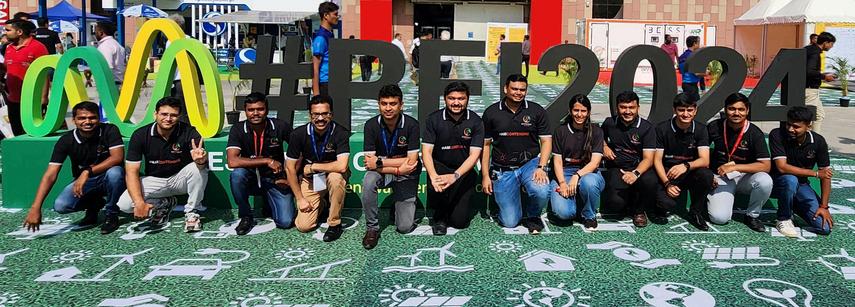

In November 2021, at the COP26 Summit in Glasgow, Honourable Prime Minister Shri Narendra Modi made an ambitious statement He said India will meet 50 percent of its energy requirements from renewable energy or non-fossil fuel-based energy resources And take our non-fossil energy capacity to 500 GW by 2030.
A large part of India’s expansion to non-fossil fuels will be in solar energy India is already moving on a fast track with an expansion in solar manufacturing driven by ambitious climate targets, strong policy tailwinds, and rising global demand for clean energy alternatives.
Renewable energy installations (including large hydro) have increased to approximately 212 GW as of January 2025 Growth in the solar power sector has been robust over the last five years, with solar power accounting for a share of 46% percent as of January 2025.
India has the potential to support 750 GW of solar energy installations and has been offering several incentives and schemes to encourage the development of solar power plants
According to CRISIL, India expects 175-180 GW of solar capacity additions over Fiscal 2025-2030 This, it said, will be driven by government initiatives like the National Solar Mission (NSM), which focuses on achieving grid parity for solar energy by 2022 and parity with coal-based thermal power by 2030, other central schemes driven by the Solar Energy Corporation of India (SECI), a Navratna CPSU, State solar policies, and other CPSU programs under the Jawaharlal Nehru National Solar Mission, (JNNSM)
At the same time, it is expected that there will be 27-29 GW of rooftop solar projects (under the CAPEX and OPEX mode) to be commissioned by Fiscal 2030, led by PM Surya Ghar Yojana and industrial and commercial consumers under net/gross metering schemes of various states
Yet, there are challenges that India must overcome if it must realize the 2030 goalpost One of the primary elements of this is to reduce imports to justify costs
There is also competition from China and high import duties in some countries which Indian manufacturers must face
The good news is that India’s solar manufacturing landscape is undergoing a transformation, and domestic manufacturers are commissioning new facilities and incorporating advanced technologies to enhance efficiency and output New integrated factories are being developed with plans to scale capacity by 2026, reflecting a broader trend
According to Mercom India, India’s cumulative module manufacturing nameplate capacity has reached approximately 63 GW in Fiscal 2024 and the cumulative cell manufacturing capacity is about 7 6 GW as of June 2024 The nameplate module capacity in India is expected to touch 82-87 GW by March 2025
Amidst this manufacturing momentum, ensuring consistent quality has become a non-negotiable priority The Government's new Quality Control Order (QCO) for 2025, notified by the Ministry of New and Renewable Energy, emphasises this imperative Coming into effect 180 days from the date of publication, the QCO requires solar PV modules, inverters, and storage batteries to conform to new Indian Standards and carry the Bureau of Indian Standards (BIS) mark This includes manufacturers, importers, and distributors, holding them accountable throughout the supply chain
The domestic market remains robust, backed by government initiatives. The PM KUSUM Scheme is specifically developed to increase the penetration of solar pumps There is a sustained demand for agriculture and irrigation needs and solar pumps are a cost-effective and sustainable solution for irrigation The PM Surya Ghar Muft Bijli Yojana, for instance, plans to install solar panels in one crore houses of middleclass and poor families
On the policy front, the government has been proactive and taken the lead through initiatives like PLI, the Domestic Content Requirement (DCR) mandate for the use of domestically manufactured solar cells and modules, imposition of BCD on the import of solar PV cells & modules, mandated registration of solar cell and module under the Approved List of Models and Manufacturers (ALMM) for complying with BIS standards, and support for training and skill development have driven this transition, promoting domestic production and lowering foreign supply chain dependency At the same time, financing support for capex-heavy manufacturers, and incentives for R&D will be crucial to sustaining momentum in FY25
The government has already made a robust beginning through policy and initiatives The industry, in turn, must focus on innovation, sustainability, and building skills to be globally competitive not just to touch the 2030 finishing rope, but also to become a global trendsetter and high-quality, sustainable solar production destination.


Raychem RPG, a leader in energy and electrical solutions, proudly announces the launch of its latest innovation the 35 Ampere SplitType Junction Box Engineered to deliver reliable, safe, and efficient electrical connections for the solar PV industry, this new product is designed to meet the evolving needs of superior current handling for solar modules This latest addition to the Raychem RPG product line reflects our ongoing dedication to innovative engineering and dependable quality
As the world moves toward sustainable energy, the demand for reliable and efficient solar power components continues to rise. Solar connectors and solar module junction boxes are essential components of any solar photovoltaic energy generation system, playing a crucial role in maintaining efficient electrical flow with minimal losses and ensuring the system’s long-term safety
Challenges Faced-
Water Penetration: With water ingress inside the junction box, failure rates increase due to corrosion and material degradation
Thermal Stability of plastic material: Junction boxes fail to handle the high temperatures and the plastic material melts
Bypass diode failure: Reasons such as dry/weak soldering, low ambient temperature handling, can lead to diode bypass
Key USP’s of our Solar Junction Box to mitigate the challenges-
Ingress Protection: Raychem RPG offers IP68 certified junction boxes to function accurately in harsh environmental conditions.
High Thermal Stability: With the use of Xyron 644z for the housing of the junction box, the relative thermal index of the housing material is 125°C, certified V0 UL-94 V0, 5VA High-level fire resistance to ensure safe operation
Double Trench type Bypass Diode: Better thermal management due to improved current distribution Double trench diodes provide improved efficiency, higher switching rates, and enhanced thermal management compared to single trench diodes.

Low voltage drops across diode: Voltage drop of 0.51V at 60A.
Maximum Working Voltage: 135 V, best in the industry to handle any voltage variations happening due to hot spots or cell failure
Challenges Faced--
Water Ingress: If connectors are not properly sealed (i e , lacking an appropriate IP67 or IP68 rating), water can infiltrate inside the connectors, causing corrosion, short circuits, or insulation breakdown
Mechanical Stress and Cable Tension: External factors such as vibrations, winds or mechanical movement and physical stress can lead to excessive pulling force on the connectors, potentially loosening or damaging the contact interfaces
High Temperatures Rise: Rising temperatures can cause plastic components to degrade, seals to crack, and metal contacts to corrode, compromising the electrical connection
Aging: With aging, the contact resistance of the connectors increases due to degradation of the metal contact, which can increase the voltage drop across the connectors
Key USP’s of our Solar connector to mitigate the challenges-
Ingress Protection: Raychem RPG’s IP 68 certified solar connector can operate for 24 hrs at one meter underwater without posing the risk of short circuiting
High Pull-Out Force: Our connectors have the industry's highest pull-out force of 350N The connection is so secure that a special unlocking tool is necessary to disengage the latches properly
Low Contact Resistance: We use the best metal contacts in the market to achieve the lowest contact resistance (0 3 mΩ) among the various connectors available
Low Temperature Rise: Due to the lowest contact resistance, the temperature rise is also the lowest Change in connector temperature (ΔT) is 24.9°C when testing in the ambient temperature range of -40°C to 85°C
High Power Handling: Power handling up to UL30A // IEC 45A @ 85°C.
In addition to the advantages listed above, both products are triple IEC certified (IEC 62852 for connectors, IEC 62790 for junction boxes) Furthermore, split type junction box is rated for 1500V DC applications with current capabilities of 25A, 30A, and 35A, making them suitable for large-scale solar installations.

SOURCE:MNRE
In the pie chart, Renewable capacity additions continue to increase at a rapid pace in India, accounting for approximately 37 6% of total India’s power capacity at the end of May 2025 India’s total installed power capacity stood at over 475 5 GW at the end of May 2025 from all the sources, with renewables accounting for 178 8 GW making up 37 6%, compared to cumulative renewable energy installations of 146 65 GW at the end of May 2024, which represented a growth of around 20% year-overyear Solar power accounted for approximately 105 646 GW of installations, which represents 21 9% of the total installed power capacity Among the renewable, Wind and Solar constitute over 90 7% of the total renewable (excluding large hydro), Wind Power installed capacity at the end of May 2025 was over 51 2 GW, which represents 10 8% of the total power capacity installed
India achieved a remarkable milestone by installing an unprecedented 12,969 56 MW of Solar PV capacity in the calendar year 2025 till May By the end of May 2025, the country's total Solar PV installations surpassed 110 8 GW
During this period, rooftop Solar PV installations reached approximately 18 37 GW Rajasthan led the way, with 29,546 7 MW installed, accounting for 26 6% of the nation’s total Solar PV capacity
The county also added around 13 GW in the first five months of the calendar year 2025. Rajasthan, Gujarat, Maharashtra, Tamil Nadu, and Karnataka together contributed over 73.78% of the total installed Solar PV capacities across the country
While Rajasthan and Gujarat maintained their leading positions, Maharashtra stepped up two spots to their position, pushing Tamil Nadu and Karnataka down to fourth and fifth place compared to installed solar PV capacity by May 2024 The overall Solar PV installations saw a growth of over 31 5% compared to the 84 27 GW recorded by the end of May 2024
SOURCE:CEAMAY2025,SOLARQUARTERRESEARCH
Total renewable energy generations in April 2025 reached 23,846 08 million units, there is an increase of RE generations by around 28 04% year-overyear from April 2024, where the RE generations were 18,623 41 million units Solar Power generation has also increased by around 31 53% year-over-year from April 2024 (12,021 05 million units) to April 2025 (15,811 82 million units), Wind Power generation has declined by almost 33 86% in the same period and reached 6,330 71 million units in April 2025

SOURCE:CEA
SOURCE:MNRE(MAY2025)
As of May 2025, India’s installed hybrid projects capacity reached 3,021 82 MW, contributing around 2 7% to the country’s total solar PV capacity This is part of the overall renewable energy capacity of 178 8 GW, excluding large hydro Hybrid projects, which combine solar and wind power, are currently limited to just three states: Rajasthan, Gujarat, and Karnataka. Among these, Rajasthan leads with the highest installed capacity of 1,980 MW This is mainly because the state has strong potential for both solar and wind energy Rajasthan receives high solar irradiation and also experiences strong wind speeds, making it ideal for hybrid energy generation The installed capacity of hybrid projects has shown a year-on-year growth of about 17 54% compared to May 2024, when it stood at 2,570 96 MW This steady growth highlights the increasing focus on hybrid projects as a solution to improve grid stability and renewable energy utilization.

SOURCE:IEX
In May 2025, the Indian Energy Exchange (IEX) reached a total volume of 10,946 million units (MU), a 2 94% year-over-year increase According to government data published in May 2025, the country’s energy consumption stood at 148.7 BUs, marking a 4% decline compared to the previous year Unseasonal rains and the early onset of the monsoon kept temperatures lower than usual, leading to reduced electricity demand Concurrently, increased hydro, wind, and thermal generation resulted in higher supply liquidity on the exchange platform which led to a substantial drop in DAM and RTM prices The Market Clearing Price in the Day Ahead Market at ₹4 12/unit during May 2025, declined 22% year-onyear Similarly, the Market clearing price in the Real-Time Market at Rs 3 43/unit during May 2025, declined 28% year-on-year
lowestTariff(INR/Kwh)
The introduction of ALMM List-I for Solar PV modules and the upcoming ALMM List-II for PV cells, set to take effect in June 2026, has added new compliance challenges for developers in India’s solar auctions, contributing to tariff fluctuations. These hurdles are further intensified by ongoing global supply chain disruptions caused by geopolitical tensions such as the Russia-Ukraine war, the Iran-Israel conflict, and unstable currency exchange rates
Although the Indian government has offered some relief by extending project commissioning deadlines, developers continue to face significant cost pressures The recent imposition of anti-dumping duties on solar PV glass imports from China and Vietnam has escalated input costs, leading domestic manufacturers to raise prices This has added to the financial burden on solar project developers
Moreover, the latest tariff hikes by the U S on Chinese solar imports have tightened global module supply and driven up prices, indirectly affecting Indian projects In 2024, solar tariffs in India remain volatile, shaped by increasing module and installation costs, project scale, and grid connectivity issues







ENE GY ICONS2025
“FirstView Presents” icons of power and purpose — visionary leaders who are transforming ambition into action. With innovation at their core and sustainability as their mission, they are driving Uttar Pradesh toward a cleaner, greener tomorrow.





SOLAR ICONS2025






Outstanding Solar Project Developer in Uttar Pradesh
HFM Solar Power Ltd.

Helium Renewables Energy Pvt. Ltd. Pioneer in C&I Solar Solutions

Green Shine Solar Excellence in Rooftop Solar Deployment – EPC


Innovator in Solar Technology Advancements (Trackers)
NewEnergie Renewables Ltd.
IB Solar Excellence in Quality & Reliability – Module Manufacturing
Rising Solar EPC Icon of the Year
Saatvik Green Energy Private Limited Excellence in Sustainable Module Manufacturing Bhaskar Jyoti India Pvt. Ltd.

Solar EPC Icon of the Year - C&I
SUN ARCHERS PVT LTD

Solar EPC Icon of the YearUtility
RAVC Solutions Pvt Ltd




Sustainability Icon in SolarPowered InfrastructureModules
Novasys Greenergy Limited
Promoter of Agrovoltaic Innovations in Uttar Pradesh
SunSeed APV
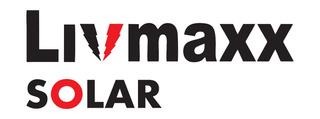
Solar Panel Icon o
Livmaxx Power Te

Founder & CEO

Solar Leadership Icon: Excellence in Solar Project Delivery







RAVC Solutions Pvt Ltd


Outstanding Energy Storage Innovation Provider
Bakz4ever (CarbonBank)

Young Icon in Smart Grid Technologies
Utkarsh Avasthi
Proprietor Green Shine Solar Ram Anuj Verma

















Solar & Storage Expo 2025 Kerala Awards honor exceptional leadership, innovation, and unwavering commitment to shaping a sustainable energy future.impact across the energy landscape.
State Market Leader AwardInverter
Ningbo Deye International Trade Co., Ltd
State Market Leader AwardModule
Saatvik Green Energy Ltd.

Best Project of The YearInstitutional
Maxgreen Infrastructure and Renewables Private Limited

State Technology Leadership Award - Inverter (ASW 3000S-S2)
Solplanet

Atmanirbhar India State Business Leader - Inverter
Feston SEV Pvt. Ltd.

Excellence in Module Manufacturing
Pahal Solar

Excellence in Inverter Manufacturing – Made in India
Selec Controls Pvt Ltd

State Distributor of the Year
Risto Solar for Solaire

Best Institutional Project Management Team of The Year
Sunfocuz Electric Pvt Ltd

Best Engineering Team of The Year
Sunverge Pvt. Ltd.
Smart Technology Innovation of the Year - Hybrid System
Sedna Energy Systems

Visionary of the Year
Sam Roofus
Managing Director
Maxgreen Infrastructure and Renewables Private Limited


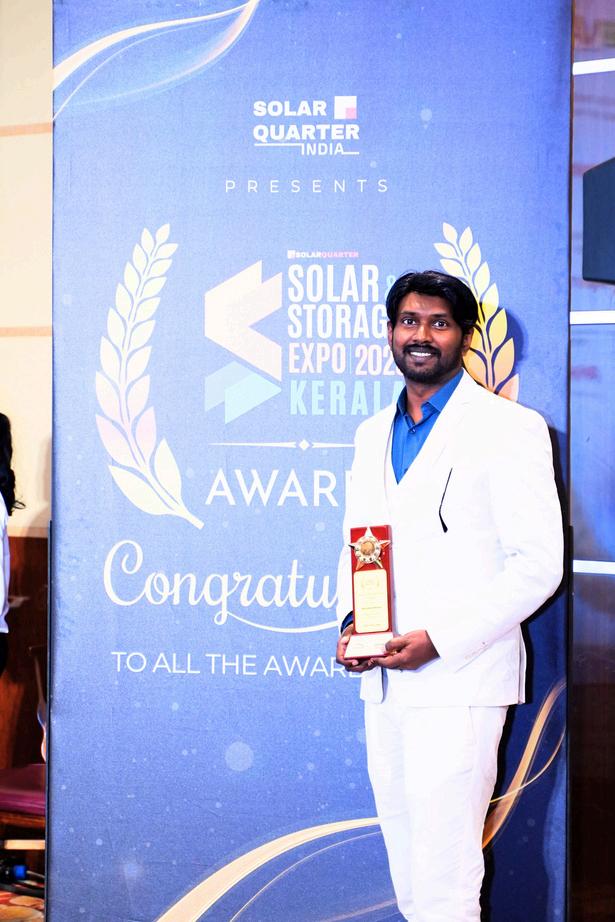
repreneur of the Year
palakrishnan K
ector
eSolar Energy Pvt. Ltd.


Company of the YearCustomer Service & AfterSales Support
B and B Associates
Company of the YearWomen Empowerment in Solar Workforce
Green Factory



Alnishan Shahul
CEO of the Year CEO
Almiya Engineering Consultants Pvt. Ltd.

mpany of the Yearlar EPC (Commercial)
Sunverge Pvt. Ltd.
Company of the Year - Solar EPC (Residential) - Platinum
Moopens Energy Solutions
Pvt. Ltd.

Company of the Year - Solar EPC (Residential) - Diamond
Afra Engineers


Company of the Year - Solar System Integrator (Residential)
Company of the Year - Innovation in Design & Engineering
morin Solar
Company of the Year - Solar System Integrator (Commercial)
FirstDay Solar





Company of the Year: Innovative RE Initiative in EPC Solutions
Wattsun Energy India Pvt. Ltd.
Company of the Year: Innovative RE Initiative in Infrastructure Development
ULCCS
Company of the Year: Green Manufacturing (Modules)
Novasys Greenergy Limited

Company of the Year: Green Manufacturing (Inverter)
Solaire - A Lagnuvo Initiative
Sustainability Leader of the Year- Hybrid System Support
Akhil Alex
CEO, Sedna Energy Systems

Paul Joseph
Sustainability Leader of the Year: Consumer Satisfaction Excellence CEO, Sologreen


The Sundowner Energy Excellence Awards 2025 recognize outstanding leadership, innovation, and commitment in advancing Rajasthan’s sustainable energy future. Tonight, we honor the pioneers whose vision and dedication are powering progress, shaping policy, and driving measurable impact across the energy landscape
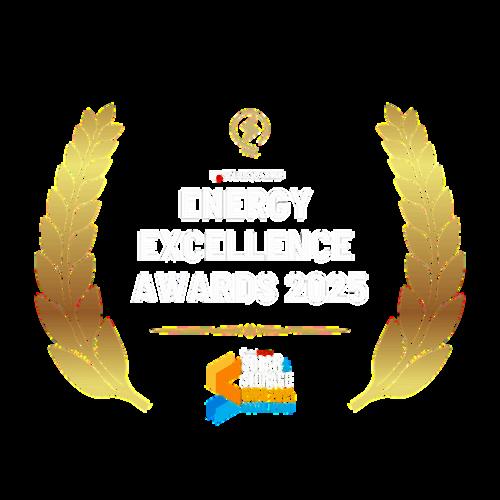


State Market Leader AwardModules
Credence Solar

State Market Leader AwardCentral Inverter
FIMER India


State Market Leader Award - Tamil Nadu - DCR Module Sales
Adani Solar
Atmanirbhar India State Business Leader
Kondaas Automation Private limited

Excellence In Smart Technology InnovationInverter
GOODWE TECHNOLOGIES CO., LTD.

Emerging Distributor of the Year
Uno Power

State Distributor of the Year
VIRIDIS ENGINEERING INDIA PVT LTD

State Technology Leadership Award - Inverter
SolaX Power Network Technology (Zhejiang) Co., Ltd.

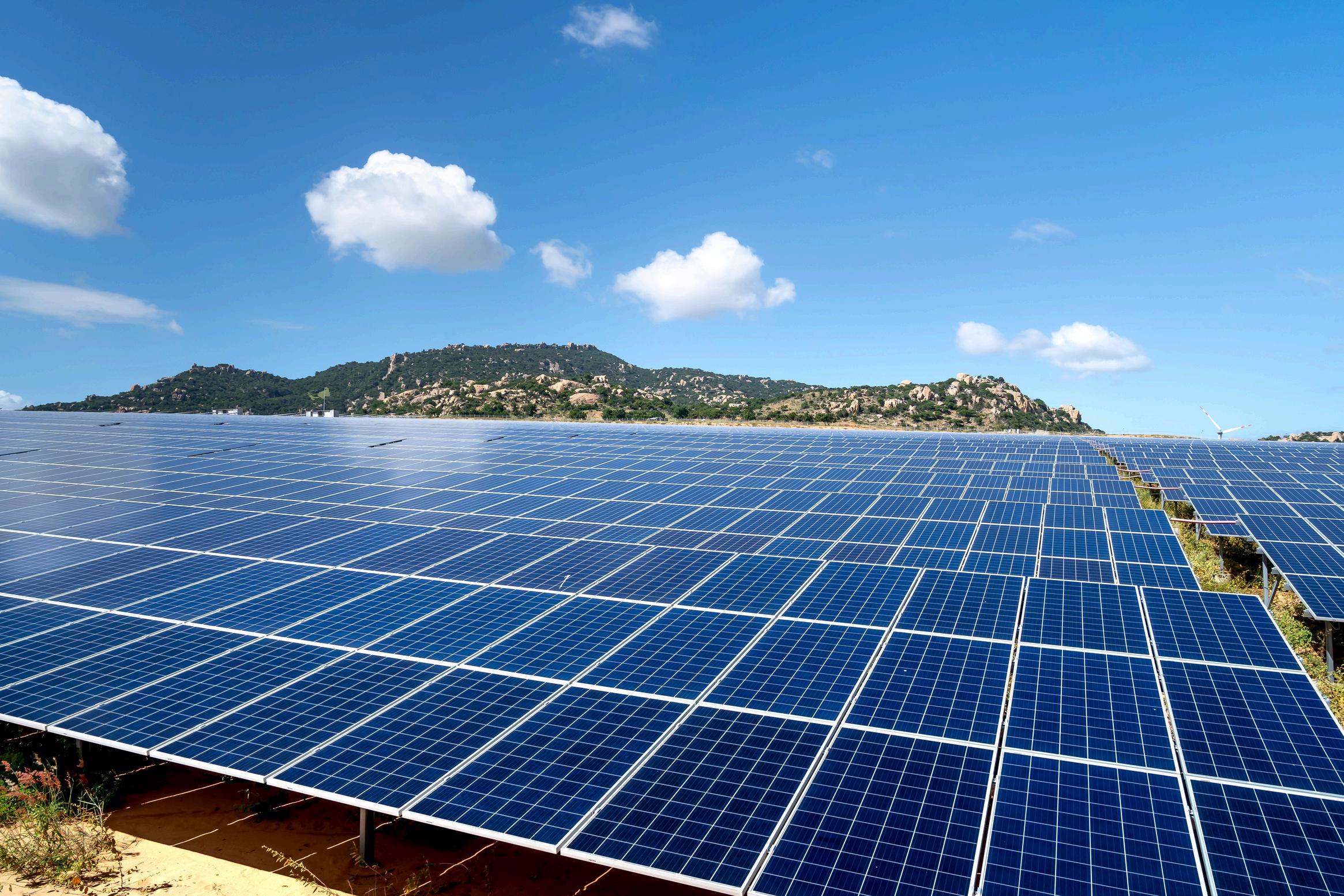
Innovative Technology Solution of the Year - Inverter
Solplanet


Solar Developer of the Year
Renfra Energy India Pvt Ltd


Best Ground Mount Project of the Year
SWELECT Energy Systems
Limited

Company of the Year –Integrated Clean Energy Solutions
Ningbo Deye Inverter Technology Co., Ltd

Company of the Year –Battery Energy Storage Systems (BESS)
Kondaas Automation Pvt. Ltd.

Company of Year : Renewable Energy Digital Solutions
ECE India Energies Pvt. Ltd.

Company of the Year – PV Module Solutions
Knack Energy Private Limited

Best Engineering Team of the Year - EPC
Ara Green Energy Pvt. Ltd.
Best Engineering Team of the Year - OEM
Selec Controls Pvt Ltd
Young Leader of the year
Rohith Kanna L M
Head of Business Development

Clean Energy Leader of the Year – Tamil Nadu
Ara Green Energy Private Limited Jayendran Periyasamy
JMD Renfra Energy India Pvt Ltd Speed Team Group


Company of the YearSolar EPC (Utility)
Ara Green Energy Pvt. Ltd.

Company of the YearSolar EPC (Residential)
Balaji Renewable Solution
Private Limited

Kondaas Automation Private limited
Kondaas Automation Pvt. Ltd.

Company of the Year - Solar EPC (Industrial) - Platinum
Company of the YearInnovation in Design & Engineering
Eternal Renewables Pvt. Ltd.


Company of the Year - Solar EPC (Industrial) - Diamond
Kcp Solar Industry Pvt. Ltd.

Best Ground Mount Project of the Year
SRM Technologies Pvt Ltd


Company of the Year: Green Manufacturing - Inverter
Solaire - A Lagnuvo Initiative



Company of the Year: Green Manufacturing - PV Modules
Loom Solar Private LImited

Company of the Year: Sustainable Technology Integration
Windplus Eagle Power Private Limited

Commercial Project of the Year: Sustainable Infrastructure
Sustainability Team of the Year: Consumer Satisfaction Excellence
Green Earth Systems Pvt. Ltd.

Solar Park Project of the Year: Sustainable Infrastructure
Klymate Technologies LLP








commitment in advancing Rajasthan’s sustainable energy future. Tonight, we honor the pioneers whose vision and dedication are powering progress, shaping policy, and driving measurable impact across the energy landscape


State Market Leader Award (Inverter) - Platinum
Sungrow India Pvt. Ltd.

State Market Leader Award (Inverter) - Diamond
Ningbo Deye Inverter Technology Co., Ltd

State Market Leader Award - Modules
Saatvik Green Energy Limited
State Market Leader Award - Mounting Structures



10-Year Milestone of Inverter Excellence in India Award
Sungrow India Pvt. Ltd.

Most Preferred Customer’s Choice Award - PV Modules
Novasys Greenergy Limited

Atmanirbhar India State Business Leader - Inverter
Feston SEV Pvt. Ltd.


State Technology Leadership Award - Inverter
Sungrow India Pvt. Ltd.



Smart Technology Innovation of the Year - Battery Energy Storage Systems
Loom Solar Private Limited


Excellence in Rooftop Inverter Technology
SOLIS
Etrica Power Excellence in Customer Service & After-Sales Support - Distributor


State Solar Installer Company of the Year
EverSolar
Best Project of the YearGround Mount
Adhiraj Technocrats Pvt. Ltd.



Company of the Year - Smart Grids
iPLON India Private Limited

Best Project Management Team of the Year
Pinaka Solar Power
Best Sales Team of the Year
Selec Controls Pvt Ltd

PAR Stat - Wi M St Ye

Women in Clean Energy –Leadership Award
Sonia Behl Vishal Chaudhary
CMD
Solars4u (An Intiative of Sachet Advisory Services P Ltd)

Young Leader of the Year
Nayan Sharma
Head - Business Development
Winbee Solutions Private Limited

Emerging Leader of the Year
Mazum Jain
Owner
Sarvoday Electromart



Company of the Year - Solar EPC (Industrial)
Pinaka Solar Power


Entrepreneur of the Year
Prakash Jain
Founder & CEO
Sunthrix Solar Energy Pvt Limited
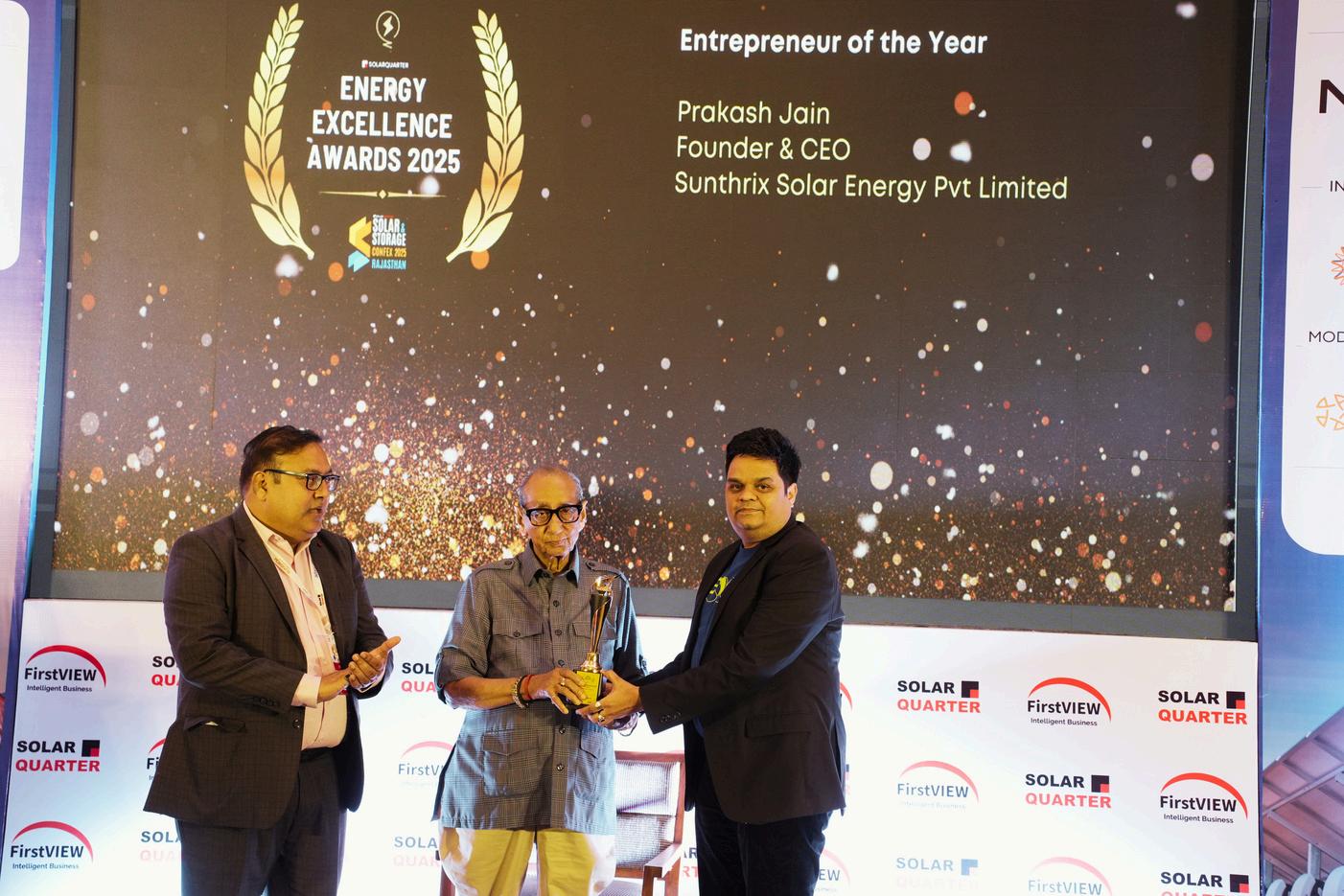


Company of the Year - Solar EPC (Residential)
Sor Connect

Company of the YearSolar System Integrator
Ultra-Vibrant Solar Energy Pvt. Ltd.

Basant Maheshwari
Managing Director & CEO
Hasti India Limited


Adhiraj Technocrats
Private Limited Solar EPC Company of the Year (Kusum Projects)Platinum

Solar EPC Company of the Year (Kusum Projects)Diamond
Varsha Solar Electric

Company of the YearExcellence in Project Delivery
Winbee Solutions Pvt. Ltd.

Solars4u (An Intiative of Sachet Advisory Services Pvt Ltd) Company of the YearCustomer Service & AfterSales Support (EPC)


Company of the Year: Innovative RE Initiative
Credence Solar Panels Pvt Ltd









